




HEALING, DOCTORING, MENDING AVALANCHE DOGS ENVISIONING THE FUTURE
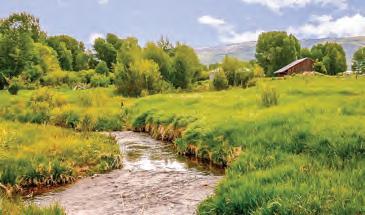
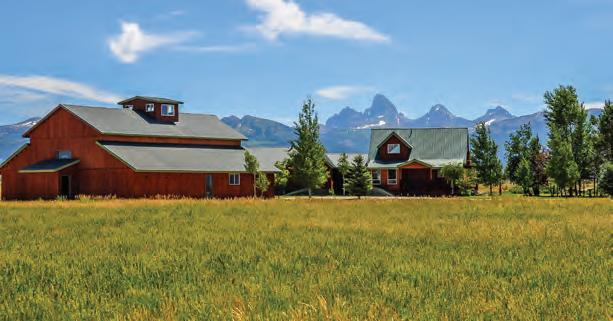
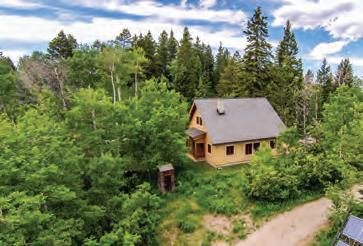
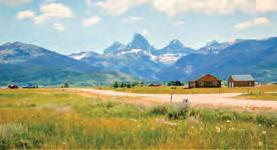
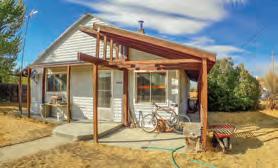
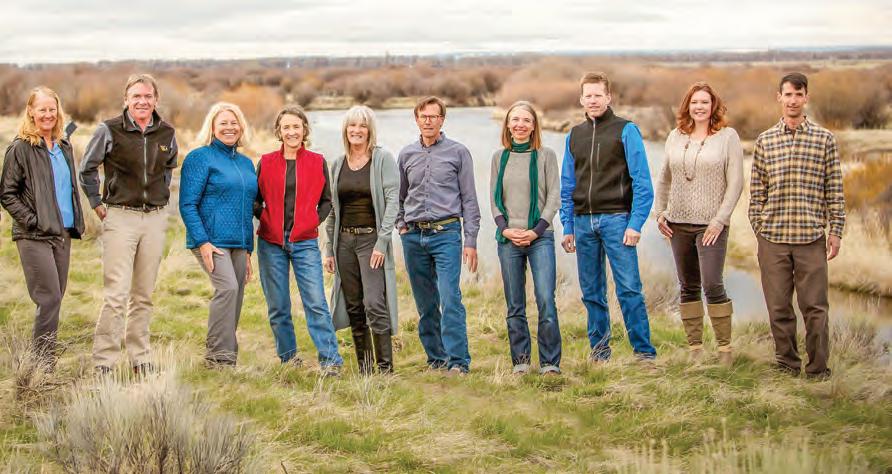

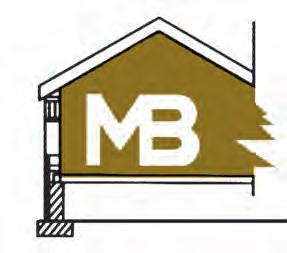
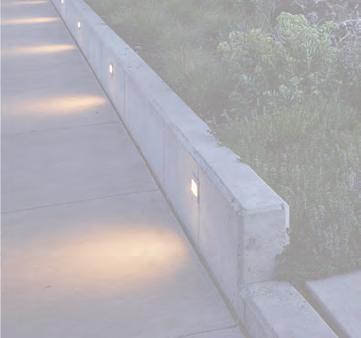
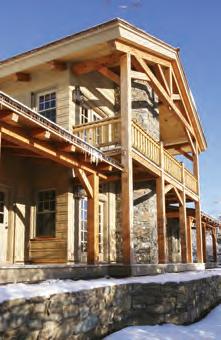

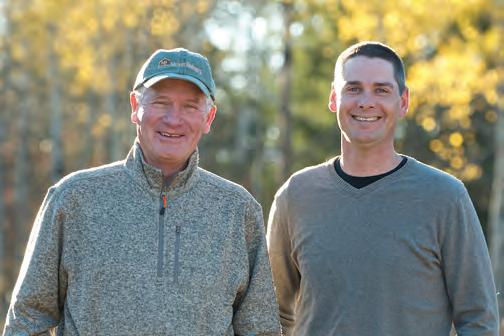
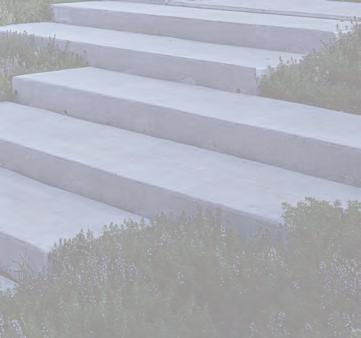


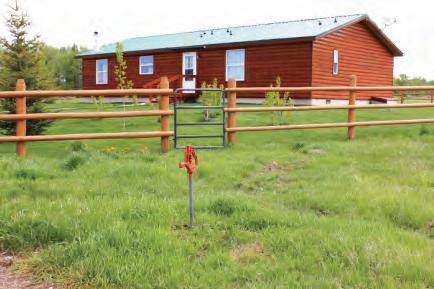

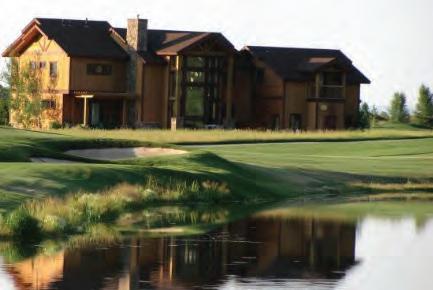
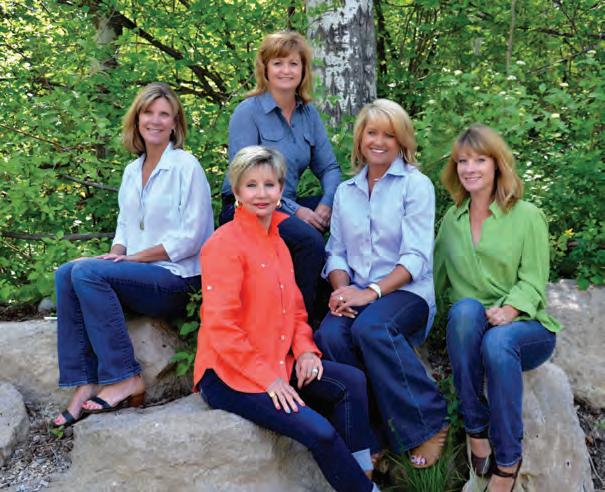

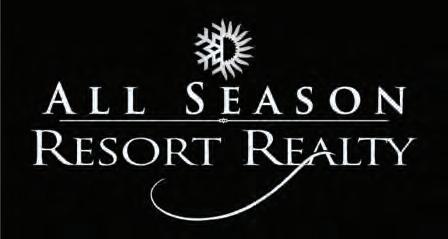


















This is Ava.
Ava lives in a community where generosity has been woven into the fabric of daily life through the annual Tin Cup Challenge. She will grow up with an understanding of the vital role nonprofits play in her community and the power of generosity to improve lives.








Anyone can be a philanthropist and it takes less than you think to make a big impact! Join with the Community Foundation of Teton Valley to improve lives through the power of generosity and be a part of continuing Teton Valley’s legacy of giving for future generations.
Botox®
Juvéderm
Topical Anesthetics
Peels & Masks
Chemical Peels
Facial Masks






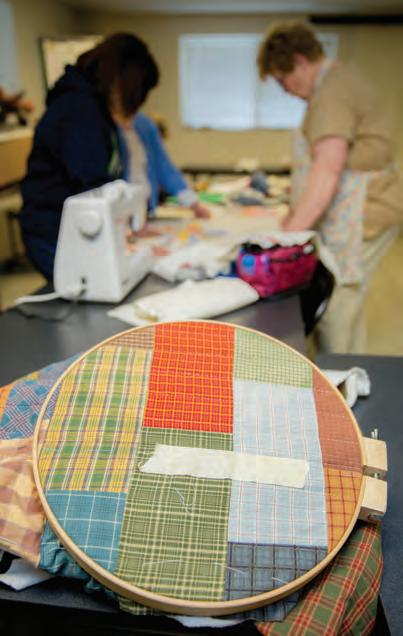
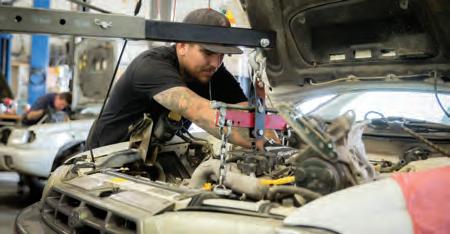
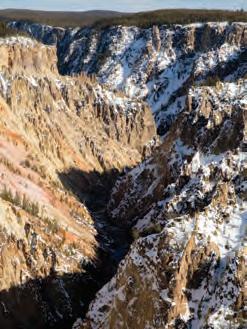


It happens with almost every edition of Teton Valley Magazine . I sit down to pen this letter not long before we go to press, reconsider the issue’s articles as a “package,” and discover an unintended thread that ties several of them together.
What I see in this issue is a theme of valley residents who heal other people and other things.
A pair of Teton Valley-based biologists, Renee Seidler and Lindsay Jones (Valley Voices), are working to establish the Teton Wildlife Rehabilitation Center. They hope to offer a second chance to animals injured as a result of human activity—whether it’s a Mazda-moose collision or a trumpeter swan’s run-in with a power line.
Jill Runnion owns the NeuroPhysics Therapy Clinic in Driggs. She herself suggested the title for the piece in which she is profiled: “Heal Thyself.” The message gets to the heart of the art that Jill strives to teach her patients.
It’s not all about helping humans and wildlife. The crew at Sue’s Roos (All in a Day’s Work) has been “healing” broken Subarus for more than thirty-five years. Sue’s Roos took the bronze in the category of “Best Place to Buy a Car” in the Best of Jackson Hole 2016 survey—even though they’re not in Jackson Hole. That says a lot.
Then there’s Dr. Chad Horrocks (Familiar Faces), the family practitioner at Teton Valley Health Care who has been serving the community since the late 1990s. Dr. Horrocks follows the small-town-doc trail blazed by Dr. Kitchener Head and Dr. Larry Curtis and, like his predecessors, he is a valley treasure.
Finally, consider two of this edition’s feature stories. “Envision Teton Valley” shines the spotlight on several residents who share their thoughts about the future of this place, a future that may require some healing along the way. And the feature by our own Kate Hull—recently promoted to associate editor at Powder Mountain Press—about the Grand Targhee ski patrol’s avalanche dog program ... it, too, involves healing.
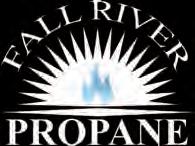

Or should I say heeling?
Sorry about that. But I’m not sorry to wish you and yours the powderiest winter in recent memory.

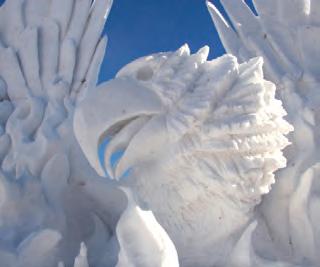
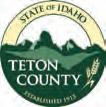
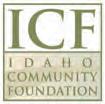


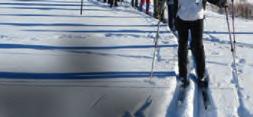
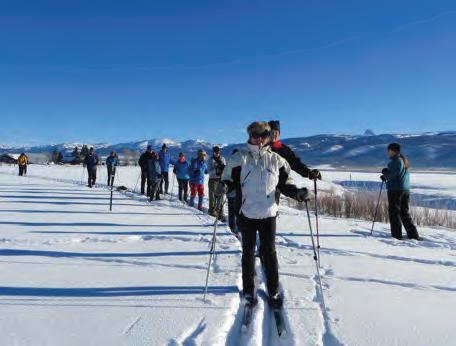

THURSDAY January 19
Snowscapes Snow Sculpting
Backcountry Film Festival
FRIDAY January 20
Snowscapes Snow Sculpting
Avalanche Awareness Clinic
Backcountry Skiing 101
Geotourism Center Exhibits
“Knowledge is Powder” Ski Camp
Knotty Pine Party w/ One Ton Pig
SATURDAY January 21
Snowscapes Viewing & Awards
Snowplane Rally & Exhibition
Pond Hockey Tournament
Backcountry Skiing 101
Kid’s Activities
Geotourism Center Exhibits
Adopt-a-Horse Petting Zoo
“Knowledge is Powder” Ski Camp Snowball VI
SUNDAY January 22
Snowscapes Viewing
Pond Hockey Tournament
Fat Bike Short Track Race
XC Wildlife Ecology Tour
Kid’s Activities
Geotourism Center Exhibits
“Knowledge is Powder” Ski Camp
Ice Skating Kotler Arena

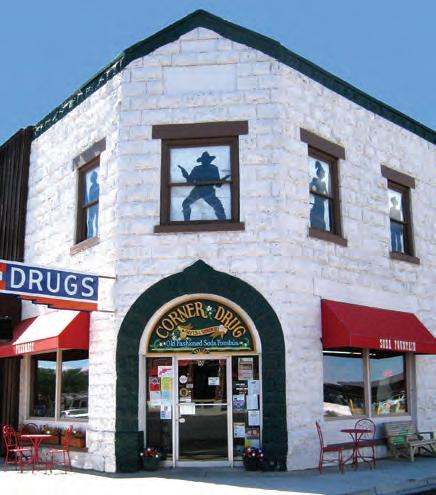

• pharmacy
• lime freezes
• huckleberry milk shakes
• specialty toys
• children’s books
• fish & game licenses
publisher
Nancy McCullough-McCoy nancy@powdermountainpress.com
editor in chief Michael McCoy mac@powdermountainpress.com
art director Sage Hibberd graphics@powdermountainpress.com
associate editor/social media
Kate Hull kate@powdermountainpress.com
• sporting goods
• hand-tied flies
• Idaho souvenirs

photographer Jamye Chrisman jamye@jamyechrismanphotography.com
marketing + sales representative
Nancy McCullough-McCoy nancy@powdermountainpress.com
marketing + sales assistant Joan Mosher info@powdermountainpress.com
contributors
Molly Absolon
Jeannette Boner
David Fischel
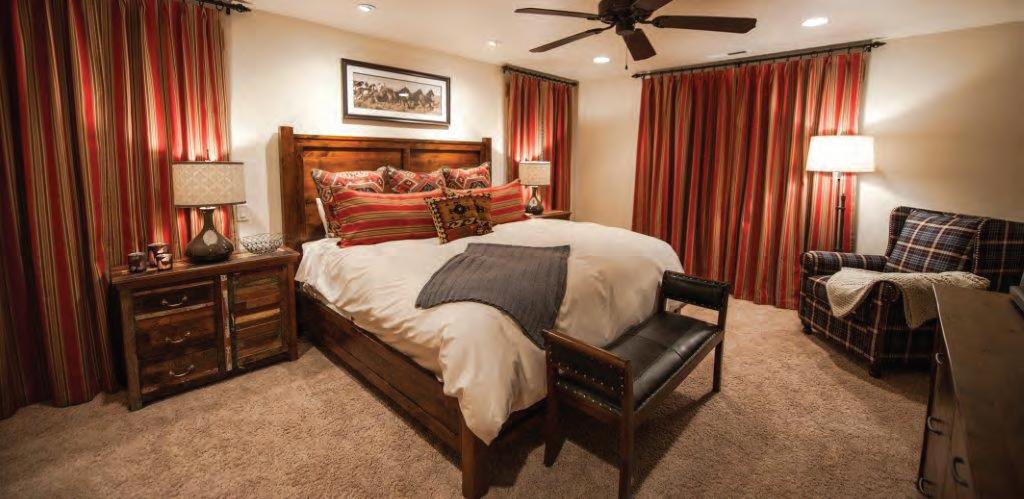

• 13 South Main Street • Victor, Idaho 208.787.FEST (3378) • www.festive-living.com
Cory Hatch
Kate Hull
Christina Shepherd McGuire
Liz Onufer
Mel Paradis
Karen L. Reinhart
Winner of 1st place in the Magazine–General Excellence category, Idaho Press Club’s Best of 2015 and 2016

Teton Valley Magazine is published twice yearly by Powder Mountain Press, Inc. 18 N Main #305 | PO Box 1167 | Driggs ID 83422 (208)354-3466 TetonValleyMagazine.com
©2016 by Powder Mountain Press, Inc. No part of this magazine may be reproduced in whole or in part without written permission from the publisher. Editorial comments, ideas, and submissions are welcomed. The publisher will not be responsible for the return of unsolicited photos, articles, or other materials unless accompanied by a SASE. Printed in the U.S.A. Volume 20, No. 2











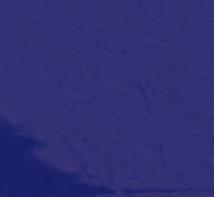






Freelance writer Molly Absolon (Over the Hill, page 56) covers everything from outdoor risk and adventure to lifestyle and the arts in order to support her own mountain adventures. She lives in Victor with her husband and daughter, and supplements her writing work with occasional outdoor education gigs and a position on the Victor City Council.
David Fischel (Far Flung, page 60) and his wife Melanie have been hanging out in Teton Valley since 1978, first as part-timers—and full-timers since 2005, when David hung up his stethoscope. “We fully embrace life here,” he says, “engaging in all manner of outdoor recreation, volunteering with various entities, and enjoying the active but laid-back lifestyle.” However, David adds, they are not at all averse to traveling away from the valley during the challenging transition seasons.
Liz Onufer (Envision Teton Valley, page 42) moved to Teton Valley in 1999. “I’ve grown to love the people here as much as the landscape,” she says, adding that she has had the opportunity to engage with many folks across the community through her past and present work, from Grand Targhee Resort and MD Nursery to Teton School District 401. Today, Liz is a freelance writer, English instructor, and PhD student. When not stuck behind her laptop screen, she enjoys trail running and backcountry skiing.
Mel Paradis (No Regrets, page 22, and Heal Thyself, page 32) loves hopping around the valley asking people about what makes their careers and businesses intriguing. And Mel enjoys doing interesting things herself, admitting that she has a hard time turning down a fun employment opportunity. Along with freelance writing, she gets paid to sling gourmet food and coffee drinks, teach acting to kids, and improvise with the Jackson, Wyoming, comedy troupe, The Laff Staff. Mel lives on the fabulous north end of the valley with her husband, kids, dog, and a few chickens.
During her fifteen years working as a ranger-interpreter and living year-round at Lake Station in the world’s first national park, Karen L. Reinhart (Winter in Wonderland, page 48) always gave the same advice to new winter employees: Learn to ski. Today, she lives near Yellowstone’s north boundary and ventures into the park to ski with her youngest daughter. Karen has published two books about the park and is currently the registrar at the Yellowstone Gateway Museum in Livingston, Montana.


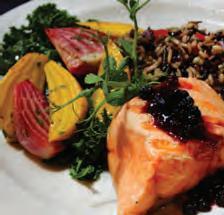
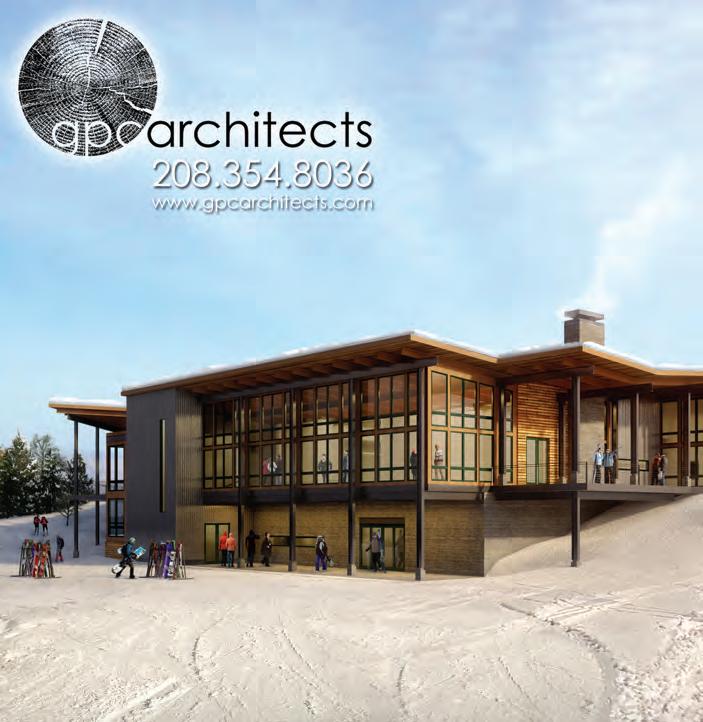
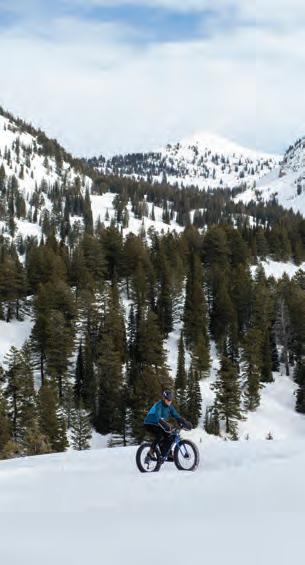


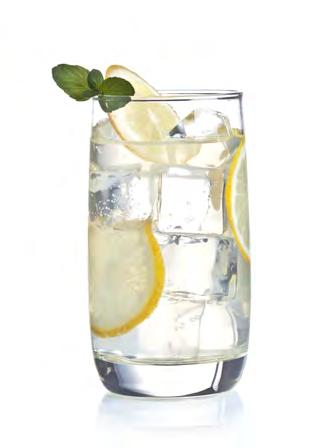

Grab a latte and freshly baked quiche at Pendl’s Bakery & Café
Explore the Teton outback on skis with Yöstmark Backcountry Tours
Cozy up with a morning cup of joe and cinnamon roll at Cicero’s Bistro & Bakery
Take to the snow on two wheels! Rent a fat bike at Habitat and explore the valley’s groomed trails
Learn about critters in winter on a snowshoe hike with Grand Targhee Resort’s naturalist
Skate or classic ski on Teton Valley Trails & Pathways’ groomed Nordic trails
Refuel with a smoothie or freshly squeezed juice at the Barrels & Bins Smoothie Bar
Beat the crowds and enjoy fresh powder during an Early Tracks session at Grand Targhee Resort
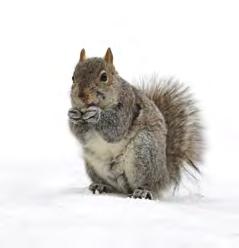
Search open waters for snow-white trumpeter swans (but keep your distance, please)
Soar over the Tetons on a glider ride with Teton Aviation
* Visit our Dining section for more bodacious breakfast ideas
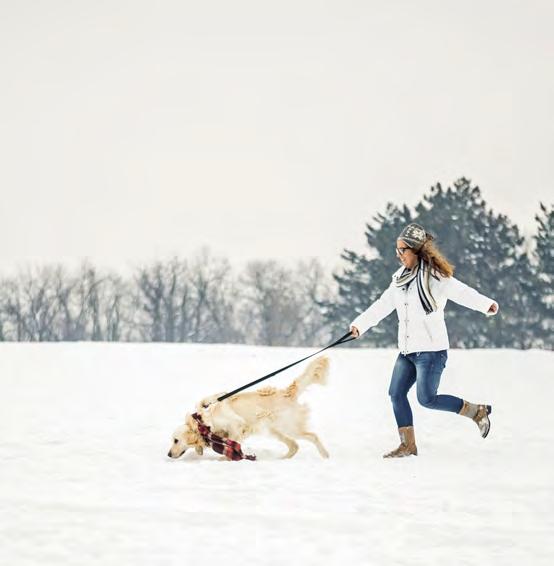
Sip through a fine lunch at Three Peaks
Dinner Table
Pop into Guchiebird’s and try not to buy something
Score thrifty deals at the See N’ Save’s new location on West Little Avenue
Tackle the famous Wydaho Nachos at the Trap Bar & Grill; stick around for après live music!
Slurp a soda at the Victor Emporium or in Driggs at Corner Drug or J & M’s Soda Shoppe
Volunteer to walk a dog or three at the Teton Valley Community Animal Shelter
Take a day trip to Island Park and explore Harriman State Park’s 24 miles of Nordic trails
Find out how Idaho’s homegrown potato vodka is made at Grand Teton Distillery
Prepare to be wowed by the Teton Geotourism Center’s terrific exhibits
Work out the knots with a massage from Stillwaters Spa & Salon at Teton Springs Lodge
* Turn to our Dining section for some lunch ideas

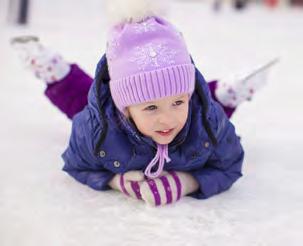
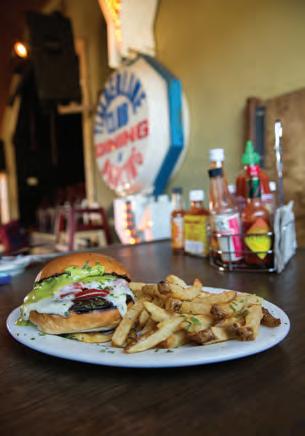
Satisfy your inner foodie’s cravings at Forage in Driggs, named the best restaurant in Idaho
Glide to your favorite tunes at Kotler Ice Arena’s Friday Night Ice public skating
Kick back under the lap blankets on a Linn Canyon Ranch sleigh ride
Join the Wildwood Room’s Monday night Teton International Table Tennis Society
Sample sushi with a side of Kimchi Pancakes at Seoul Restaurant in Driggs
Share stories from the slopes and sip specialty brews on tap at West Side Yard in Victor
Dine slopeside and sample Rocky Mountain fare at Grand Targhee’s Branding Iron Grill
Catch a first-run movie at Pierre’s Playhouse (learn more on page 64!)
Enjoy a runway-side repast at Warbirds Café, then check out the vintage aircraft nearby
Get down and get funky with some late-night live music at the Knotty Pine
* Go to our Dining section for more dinner suggestions

Skiing, ice skating, sledding … winter is filled with wonderful ways to get out and have fun. But sometimes, blizzards keep residents indoors, where they rely on electricity to keep the elements at bay. Unfortunately, occasional power outages can occur. Fall River Rural Electric Cooperative, our local power provider, encourages owner-members to take the following steps to help ensure that they remain safe and warm in the event of an outage, while the Fall River team fixes the problem.
Fill the Gaps. Before winter arrives, check weather stripping around doors and windows. Are there cracks or gaps? And are your windows properly insulated? Fall River offers home efficiency rebates for replacing those sub-standard windows and doors.
Add Insulation. Intense cold can cause pipes to freeze and burst. A simple and inexpensive defense is to buy pipe wrap insulation at the hardware store and wrap your water pipes. For help, Fall River will perform an energy audit to check efficiency and offer tips. The audit is not free, but the cooperative offers rebates for owner-members.
Be Proactive. Plan ahead by putting together an outage kit, and make sure everyone in the family knows where to access it. Include a battery-operated or batteryfree crank radio, flashlights, extra batteries, warm blankets, outerwear, socks, and drinking water.
Visit FallRiverElectric.com for more information.
A key component of Teton Valley’s educational landscape, the Teton Valley Education Foundation supports seven public schools and nearly a hundred teachers in a district that grows by an average of thirty students annually.
TVEF executive director Pam Walker and her team of volunteers—in partnership with the Rotary Club, Corner Drug, and Subs for Santa—provide hearing and vision screenings, backpacks, and supplies for kids in need. Another pair of important programs they support are ArtReach and the student-to-student high school mentoring project known as VOICE.
“We are excited to continue letting people know we exist and are here to help,” says Pam. “We just moved our office to the high school, and we are trying to build more community awareness.” More information: tetoneduca tion.org.
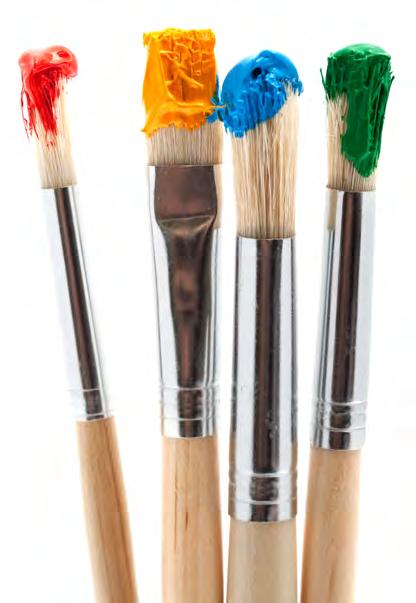

As you start up the mountain on Grand Targhee Resort’s Dreamcatcher lift this winter, you can look down on the features of the Sweetwater Terrain Park. Snow sliders test their skills in this park that has grown over the years to include jumps, boxes, rails, vertical taps, spines, and more.
Not ready to hit the big jumps? Take the Shoshone lift to the beginner’s terrain park, the resort’s second freestyle playground.
“We have boxes, rollers, and smaller jumps situated around kid-friendly terrain in the Kid’s Fun Zone,” says Jennie White, Grand Targhee’s marketing and social media manager. “North Pole is a perfect way to introduce skiers and riders to terrain park safety and etiquette.”
Jennie encourages terrain park newbies to sign up for a lesson with one of the certified PSI instructors at Grand Targhee’s Ski & Snowboard School. Info: grandtarghee.com.
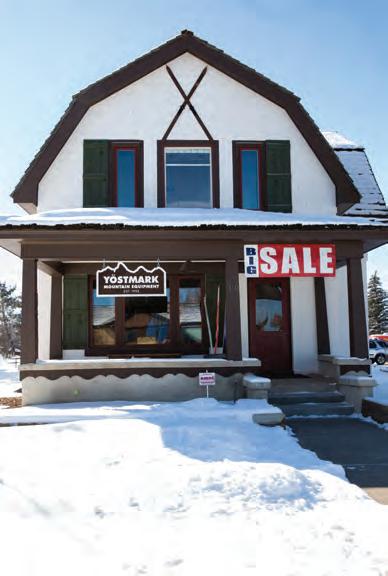
A mountain enthusiast’s mecca located in downtown Driggs, Yöstmark Mountain Equipment is the home of Yöstmark Backcountry Tours. Offerings include guided tours and instructional services, with classes geared toward both experienced and beginning backcountr y travelers. This year, owner and guide Rich Rinaldi is offering a pair of one-day avalanche rescue seminars, on December 17 and January 21. The focus will be on beacon searching and companion rescue management. Visit yostmarktours.com to learn more.

Music pumping and the lights dimmed, Brook Nelson chimes in over her headset: “Push yourself! You came here for a reason!”
Brook is the manager of Teton Valley’s indoor cycling studio, Spin Cave. Monday through Saturday, she and her team offer a variety of spin classes. “The Spin Cave is a great training tool for all types of athletes and non-athletes alike,” Brook says. “It improves endurance, strength, and power on all levels: physically, mentally, and emotionally.”
Classes are easily booked on a smartphone app called MindBody. Spinners purchase individual classes or a ten-pack pass and can make reservations in advance to claim one of nine available bikes.
Spin Cave is owned by Teri Reiley, the owner of Anytime Fitness, where Brook is a personal trainer. Teri’s newer studio opened to such popularity that she immediately had to add more bikes to the space. She encourages trainers to make each class as fun and creative as they can. For example, Brook is known to host holiday-themed classes to spice things up. Trainer Jennifer McCrillis gets the beats pumping with ’80s- and ’90s tunes.
“Everyone needs time to escape some aspect of their life,” Brook says. “What better place to run to than here, a place that makes you healthier?”

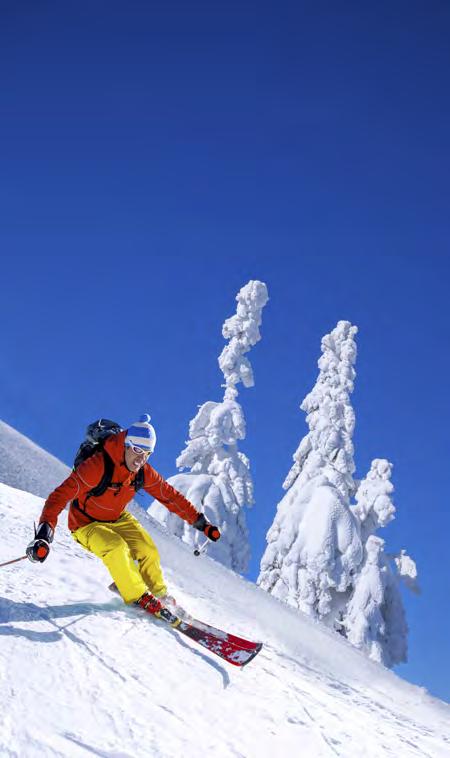
Before hitting the slopes this winter, make sure your knees are ready for the stress. According to Kelly Sadauckas, a physical therapist at Streubel Physical Therapy in Driggs, winter sports enthusiasts can take preventative measures to help ward off injuries. “Typically, the main reason people get injured is [rela ted to] strength, flexibility, and balance,” she says. “They are too tight or too weak to use their knees properly.”
Kelly says the most important thing she teaches is a neutral body position, where one’s weight is equally distributed and pressure is shifted slightly to the outside of the feet. Next, she focuses on flexibility, explaining that tightness in the thigh and calf muscles can cause joint compression that leads to knee pain.
Kelly encourages skiers and snowboarders to include in their pre-season prep a professional assessment of their quadriceps, glutes, and calves. Info: streubelphysicaltherapy.com.
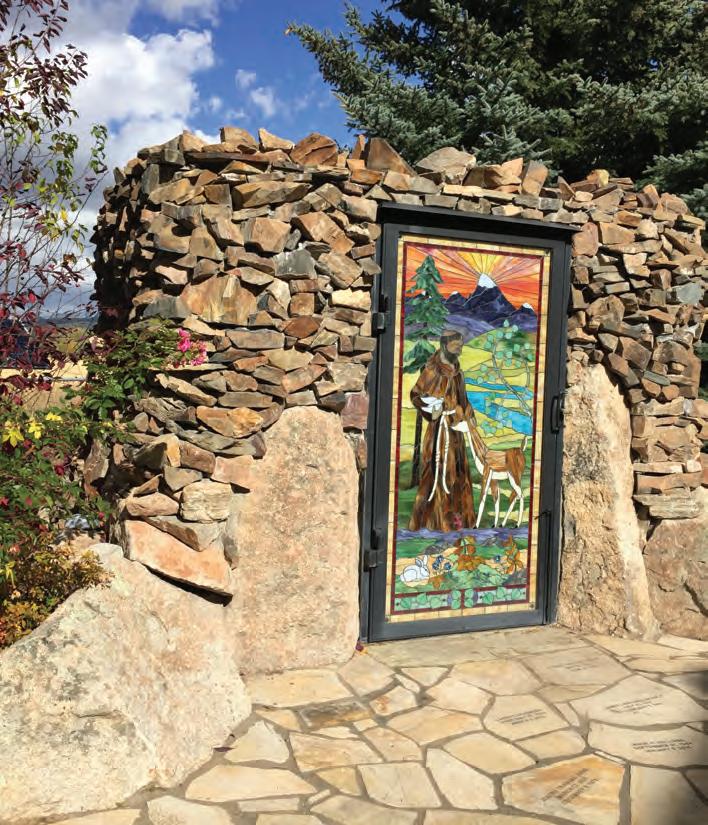
Sunrays hit the door of the St. Francis of the Tetons Columbarium, illuminating the intricate stained-glass design. A stone walkway engraved with names leads to the door, which opens on a space holding sixty-eight niches for loved ones’ cremains. Both welcoming and comforting, the columbarium came to fruition nearly ten years after it was first envisioned.
“The columbarium is the only option [for interment] in Teton Valley, other than the cemeteries,” says Lisa Wagener, a member of the columbarium committee.
The structure’s design was created by committee member and local artist Philbin de Got Schulz and Jenn Zung of Harmony Design & Engineering. Philbin based the design around the church’s rustic stone look, hoping to create an approachable, less-formal version of a columbarium she had seen earlier. Skip Dempsey fashioned the stained glass door and the tiles inside.
Each niche can hold two urns or boxes, and the columbarium is surrounded by a memorial garden with a bench and open space. The church hopes eventually to add a labyrinth, more memorial benches, and a pet cemetery (St. Francis of Assisi is the patron saint of animals).
“‘All are welcome’ is the byline,” Philbin says. “You don’t have to be an Episcopalian to be interred here. We thought it would be good … to make our church another all-inclusive part of the valley.”



Thrifty Shopping
Teton Valley’s popular thrift store, See N’ Save, moved to 75 West Little Avenue in Driggs this past fall. The new location provides bargain seekers more than twice the space they previously had in which to search for their latest treasure.
See ‘N Save not only offers throwback ski onesies and gently loved furniture; the shop is also the sole fundraising arm of the Teton Valley Hospital Foundation. Money raised goes toward continued operation, but the lion’s share is given back to the hospital to help with the purchase of equipment, expansion initiatives, and overall hospital renovations, says Jenny Wade, executive director of the foundation.
Currently, See N’ Save is run by a dozen volunteers who manage the sorting, stocking, and pricing of goods. Looking to the future, Milissa West, store manager and volunteer coordinator, hopes the larger space will lead to new opportunities for pick-up and delivery options.
“When someone is moving, and wants to give us a couch or a washer and dryer, they don’t always have a way to get it here,” she says. “We scramble for volunteers and do what we can to pick things up, but sometimes we miss an opportunity for donations because of that.”
See N’ Save accepts wearable clothes, working equipment, used home furnishings, and other items that are still in good and functional condition. But be conscientious of your giving: When an item that is not useable or able to be sold is dropped off at the store, See N’ Save ends up having to pay to have the item removed. That’s less money for the hospital, and more expenses for Milissa and her team.
See N’ Save is open from 10 a.m. to 4 p.m. Monday through Friday, and Saturdays from 10 a.m. to 3 p.m. Looking to volunteer? Contact Milissa at mwest@tvhcare.org.
Heading east through Driggs, you might not notice the quaint bungalow-style bistro nestled just off the corner of Little Avenue and Third Street. But inside the charming, cozy space boasts the best restaurant in Idaho. USA Today and Yelp joined forces this past fall to name the top restaurant in each state, using an algorithm that combined users’ ratings and reviews to find standout stops. Forage claimed the top honor.
“We feel honored and excited,” says co-owner Lisa Hanley. “We are so excited that we are in Teton Valley and able to bring recognition to this area that has so many awesome restaurants.”
Lisa and Christian Hanley took over Forage two years ago this January. With over twenty years in the restaurant industry, the husband-and-wife team work together to create the Americanastyle cuisine for which the restaurant is known. Lisa brainstorms flavor profiles, while Christian makes them come to life.
Stop by any day of the week to sample seasonal items like a crispy duck salad, rabbit ragu, and twice baked sweet potato. More information: forageandlounge.com.

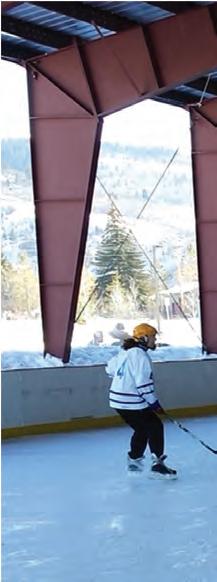





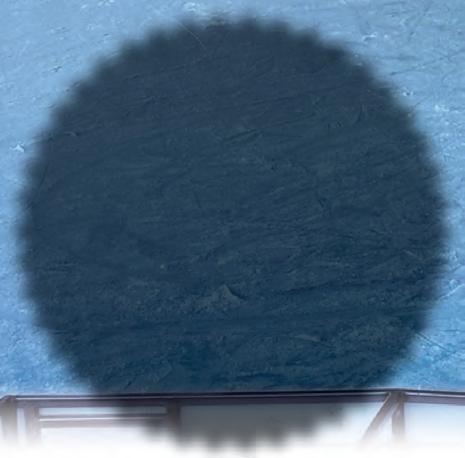




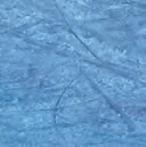





THE SUE’S ROOS CREW, LEFT TO RIGHT: JOEY HURWITZ, ETTA ROKES, LUSIO CHAVEZ, GARDNER PERRY, AND JASON STIEGELMEYER. THEIR FOUR-LEGGED FRIENDS ARE HOPE (LYING) AND GEORGIA.

Rare is the Subaru owner who rues the day he or she discovered Sue’s Roos
BY MEL PARADIS PHOTOGRAPHY BY JAMYE CHRISMAN
On a recent visit to the valley, my friend’s sister voiced an astute observation about our home territory: “The only thing there are more of in this valley than Subarus are dogs and pickup trucks.” While pickups are a staple of any rural town, both Subarus and multiple-canine households do seem to be unusually abundant in Teton Valley.
A location where one is sure to find an ample sampling of both Subarus and dogs—five resident office pooches at last count—is Sue’s Roos Independent Subaru (“independent” meaning non-franchise).
Launched in the late Patrick Gallagher’s Victor garage, Sue’s Roos has been servicing Subies, and the occasional “other make,” since 1979. As the years passed and the reputation grew, Gallagher hired Lusio Chavez and Etta Rokes to help keep up with demand and expand the business. In 2007 they moved to their current location on Rocky Road Industrial Loop south of Driggs. When Gallagher lost his battle with colon cancer in 2009, Etta continued carrying the torch.
Sue’s Roos has a cult-like following throughout the Tetons. The company’s crew has been likened to trusted family pediatricians, knowing each “baby” intimately.
“Day in, day out we deal with more Subarus than most Subaru dealers, because they work on all makes,” says Jason Stiegelmeyer, Etta’s “co-pilot” and Sue’s Roos’ sales manager. “We are spoiled because we know Subarus so well.”
Sue’s Roos was voted “Best Mechanic” in a recent Teton Valley poll, and the enterprise took bronze in the category of “Best Place to Buy a Car” in the Planet Jackson Hole Best of Jackson Hole 2016—even though it’s not in Jackson Hole. A recent Facebook post praised Sue’s as “Hands down. Honest, fair, and wicked competent.”
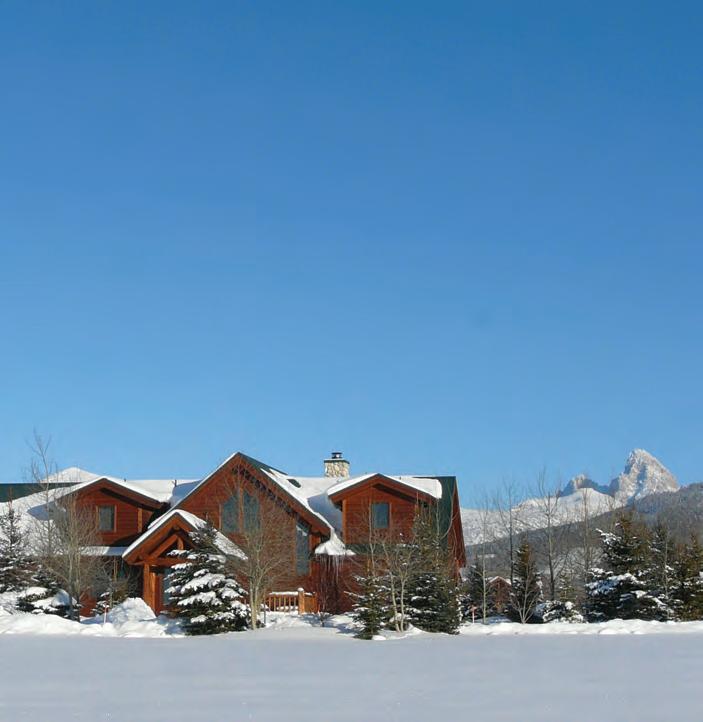















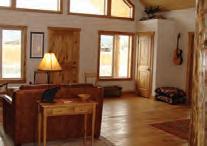


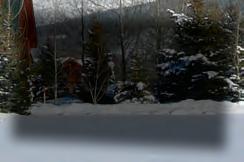
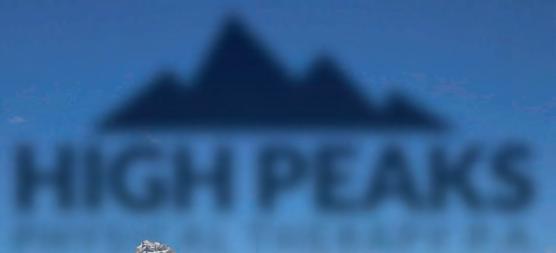
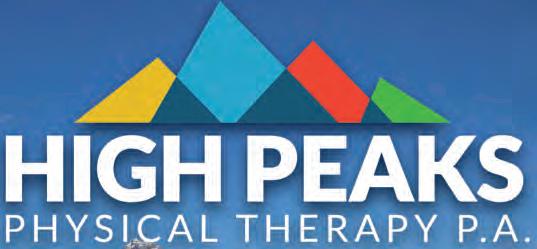

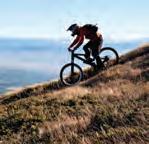




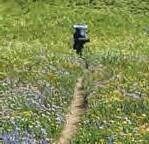



























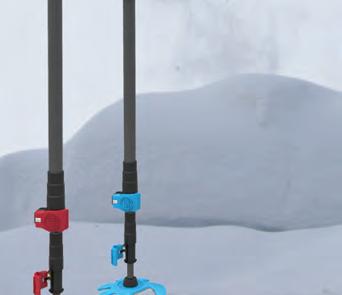



























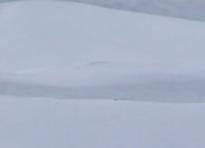










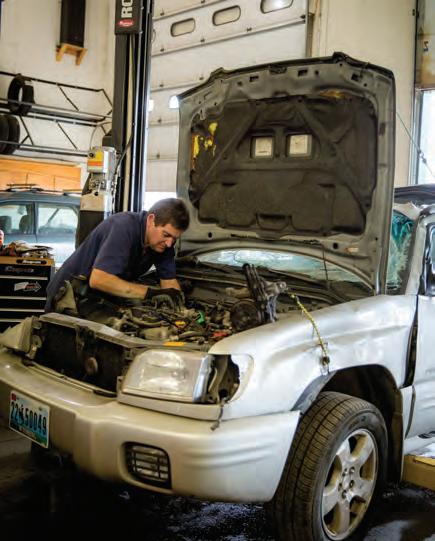
How does a company earn such a stellar reputation, along with an A+ rating from the Better Business Bureau?
“It is important that we are trusted,” says Etta.
Chris Pennick has been bringing her cars to Sue’s Roos since the days of Gallagher’s garage. “Several times we went in with what we thought was a specific problem and they sent us home with a cheaper, smarter solution,” says Chris.
“We have to make money,” Jason says, “but we don’t need to do things unnecessarily.”
The mechanics at Sue’s Roos don’t typically work on trucks. Yet, says Chris, “they saved us when the radiator on our Chevy blew during woodcutting season. Without Sue’s it would have been a cold winter.”



One way Sue’s Roos keeps costs low and gets cars back on the road quickly is by maintaining a large boneyard of old Subarus that they mine for parts. More than once a parent has showed up there, guilty teen in tow, looking to fix a dented fender or door.
“We sell a lot of cars to first-time drivers. We also repair a lot of those teen drivers’ mistakes,” Etta says, laughing. “The colors don’t always match, but most of our customers don’t seem to mind.”
Those customers include an array of interesting folks. “Subaru owners can be eccentric,” Jason says. “We get great characters. [They’re] a different breed.”

ABOVE LEFT: GARDNER PERRY WORKS HIS MAGIC ON A SICK ’ROO USING A BUNGEE CORD AND OTHER HIGH-TECH GEAR. ABOVE: THE BONEYARD.

One of those characters, an exFour Seasons chef, likes to escape Jackson Hole for the oasis of Sue’s Roos’ waiting room. He says he enjoys sitting in the quiet, and he even brings huge meals over the hill for the staff to enjoy.
Another loyal customer is Teton High School history teacher and track coach Neil Gleichman. His current— and third—Subaru, a 1995 Legacy, passed the 400,000-mile mark last year. He’s shooting for 500,000.
“A lot of the fun of having a highmileage car is the slight gamble with each long road trip to some remote location,” Neil says. “It’s kind of like an extreme sport for peregrinating older people. Sue’s Roos are clearly invested in my participation in this game. To be honest, they kind of fuel it.”
“It feels like a reality show some days,” Jason says. A reality show filled with plenty of unconventional people, lots of Subarus, and several dogs … along with the occasional pickup truck.






















BY CORY HATCH

New nonprofit aims to rehabilitate wildlife injured by human activity
In 2014, Grand Teton National Park wildlife watchers mourned the loss of a cow moose after a tragic accident at the Gros Ventre Campground.
It was late September, mating season, and a crowd of photographers had gathered around the cow and her would-be mate, a large bull. Witnesses say some photographers pressed in too close, prompting the animals to bolt through the campground. The chase ended when the cow moose stepped into a fire grate and broke her leg. Park rangers euthanized the animal with a gunshot.
Teton County, Idaho, and Teton County, Wyoming. Public education is a big component of the mission.
Local wildlife agencies don’t keep track of injured or orphaned wild animals in the region, but the number is likely quite high. Add up all the injured animals from wildlife-vehicle collisions, fence entanglements, power line collisions, and other human sources, and there’s substantial need for a wildlife rehabilitation center, say Renee and Lindsay.
For some context, according to data provided by the Jackson Hole Wildlife Foundation, in 2015 wildlife-vehicle collisions accounted for 259 wildlife deaths
“The goal is to release all of [the animals] ... We’re not building a sanctuary,” says Lindsay Jones.
Lost in the fracas was the fact that another moose probably died as a result of that accident. The cow moose had a yearling calf. Park officials said at the time that they weren’t sure whether the calf would survive the winter. All told, rangers had no option but to kill the mother and let the calf fend for itself.
This incident, and others like it, struck a chord with local biologists Renee Seidler and Lindsay Jones.
It’s ironic, Renee says, that we live in the Greater Yellowstone Ecosystem, an area renowned for its wildlife, and there are no good options to treat an injured mammal, songbird, or waterfowl. Aside from the Teton Raptor Center in Wilson, Wyoming—which, as the name implies, treats only raptors—it’s 450 miles to the closest wildlife rehabilitation center, located in McCall, Idaho.
“A lot of animals that are injured won’t survive that trip,” Renee says.
To fill the gap, Renee and Lindsay have spent the last few years developing the Teton Wildlife Rehabilitation Center, a 501(c)(3) nonprofit with the goal of opening a facility for injured wildlife. The center will focus on treating wildlife that sustain injuries from human activities or developments in
in Teton County, Wyoming, outside the national parks. A portion of those animals did not die on impact and could have been candidates for rehabilitation.
For Renee and Lindsay, a clear line exists between wildlife that are injured during the course of their natural lives and wildlife that become injured through an unfortunate interaction with humankind.
“It’s our moral obligation to intervene on behalf of wildlife, but we also believe in letting nature take its course,” Lindsay says. “If there’s a failed predation attempt, as an example, it’s going to be hard, but we wouldn’t intervene.”
Educating the public about when and how to intervene is a key component of the center’s mission. “It’s really important to leave those [naturally injured] critters on the landscape,” Renee says. “It maintains the natural cycle of death, predation, and scavenging.”
The moral obligation to undo some of the human-caused damage becomes even more crucial, Lindsay says, as the Greater Yellowstone area becomes inundated with more tourists, more residents, and more development. “I’ve noticed a huge increase in traffic and visitors, and [this means] you’re going
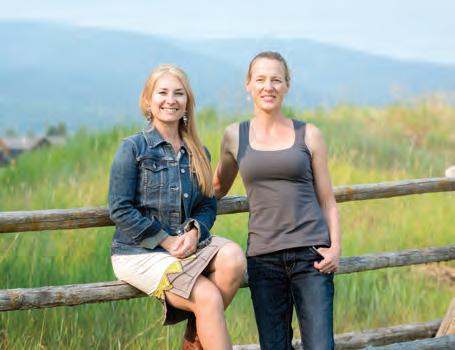
to have more wildlife-human interactions,” she says.
The idea of a wildlife rehabilitation center in the region has garnered support from agency representatives and wildlife advocates alike.
“If we can give wildlife a second chance to live in the wild, we should do it,” says Lisa Robertson, co-founder of Wyoming Untrapped, a nonprofit that advocates for the reform of trapping regulations. “I see injured animals every single day, a lot of them from trapping. Many are non-target, non-game animals that are tossed because they have ‘no value’.”
Lisa points to the success of the Teton Raptor Center as an example of a wildlife rehabilitation effort that has excelled at educating the public. “They’re hooked for life,” Lisa says, of people who volunteer for the center or participate in its education programs.
The biggest challenge Renee and Lindsay currently face is finding a piece of land on which to build a rehabilitation facility. When they do, the biologists’ vision can truly come to fruition. The idea is to take in roughly fifty animals per year.
“The goal is to release all of them,” Lindsay says. “If we can’t release [an animal], we probably won’t take it or we’ll find an alternative. We’re not building a sanctuary.”
Learn more about the Teton Wildlife Rehabilitation Center at tetonwildlife. org
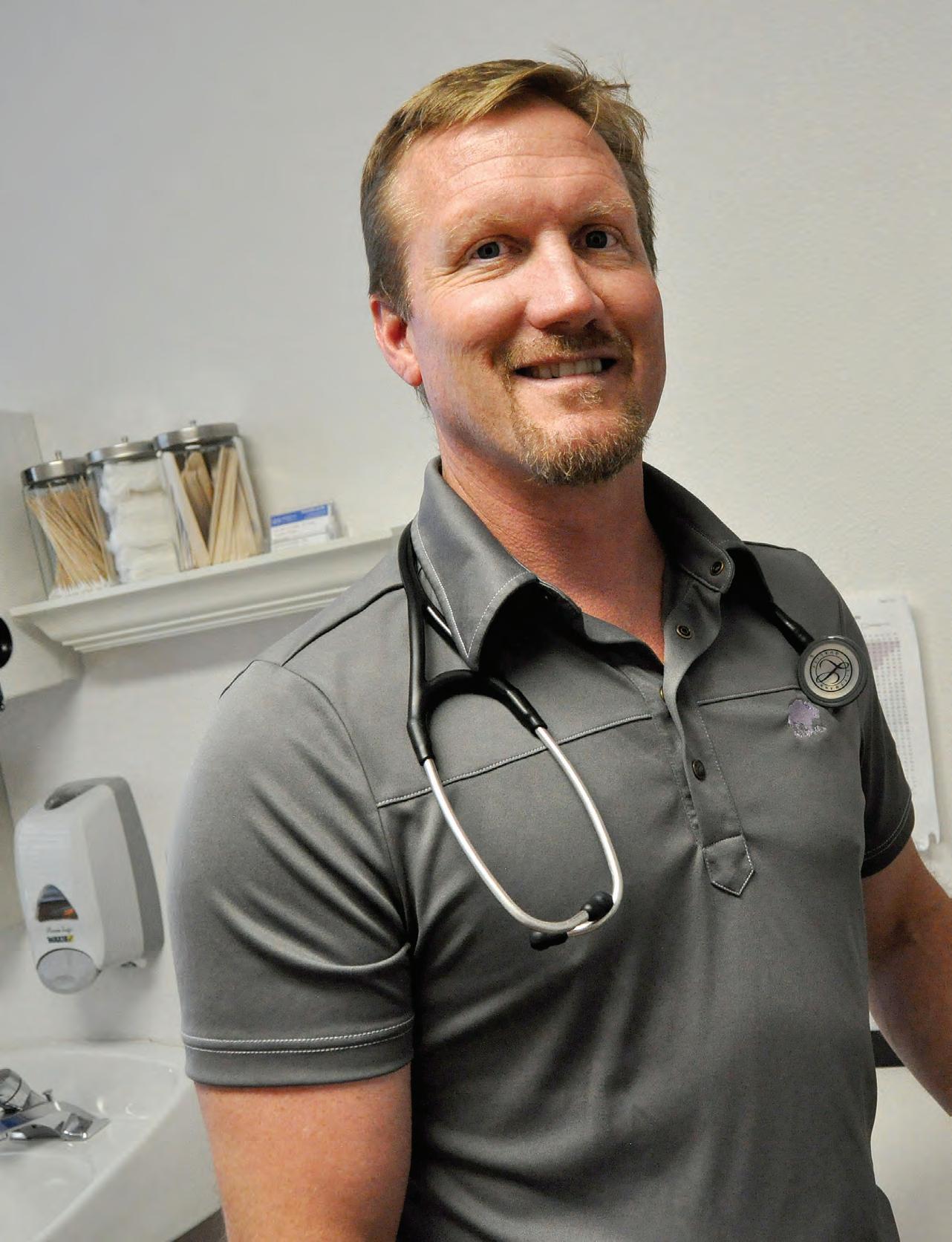
Dr. Chad Horrocks carries the torch of valley’s ‘small-town doc’
Dr. Chad Horrocks doesn’t go to Broulim’s.
It’s not because our local grocery store doesn’t carry his favorite brand of cereal. It’s because Horrocks, the family practitioner at Teton Valley Health Care, would likely spend two hours chatting with folks, while wanting only to pick up a gallon of milk, before making it back to the parking lot. He’s that popular
“It’s part of the lure of a small town that can be a double-edged sword, when you lose your anonymity,” says Horrocks, laughing, in his office inside the Driggs Health Clinic. “I don’t mind running into my friends and neighbors. It’s just that sometimes my patients don’t want to see their doctor while they’re shopping.”
He admits it’s not a tough problem to have. In fact, it was one of the reasons he and his family decided to move to Teton Valley in the late 1990s.
“I really knew early on that I wanted to go someplace rural,” says Horrocks, currently the longest serving doctor on staff at Teton Valley Health Care. The nonprofit medical facility includes the Driggs and Victor health clinics as well as Teton Valley Hospital. “As a human being, I feel more comfortable in wide open spaces, and I like to disappear on the trails.”
Horrocks wanted to settle in a place where he could raise his family, where the people he saw on the streets were the same people he saw investing in his children at school and that he met up with at community functions. He was looking for a place that still held a certain set of small town values and was also willing to grow and accommodate new people.
But more than that, Horrocks says, he sought the ultimate challenge of being a small town doc. And primary care satisfies that challenge for him in this small outpost in the Rocky Mountains.
“When I was doing my rotations and
trying to decide what I wanted to do, I liked the idea of having a variety of patients,” he says. “With primary care, you deal with everything. That is appealing to me, because it’s a very challenging position to be in and you have to do the medicine right. I also wanted to work with kids in my practice. So it worked out that I could live in Driggs, practice, and raise a family.”
A board-certified Family Practice Physician, Horrocks completed his PreMed at the University of Utah in 1992 and earned his Doctor of Medicine in 1996. He joined the staff at Teton Valley Health Care after his residency at McKay-Dee Hospital in Ogden, Utah. Now, after more than fifteen years, he has served thousands of patients while he and his wife Alicia raised three children under the shadows of the Tetons.
“It’s just that sometimes my patients don’t want to see their doctor while they’re shopping.”
Horrocks tips his hat to the leaders and doctors who paved the way for Teton Valley Health Care, including Dr. Kitchener Head and Dr. Larry Curtis. As the small town health care system ebbs and flows, weathering politics and financial challenges, Horrocks, like those before him, has stayed.
“Dr. Head paid huge dues to lay the groundwork for a health care system in the valley and to get the community to wrap their minds around a health care system,” he says. “When I got here, fifty percent of patients went out of the valley to get health care. What’s hard is change, and [we are] changing the perceptions of the hospital and hopefully changing attitudes one patient at a time.”
In many ways Horrocks has done just that, carrying the baton of those
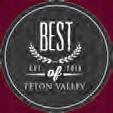



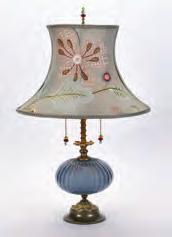



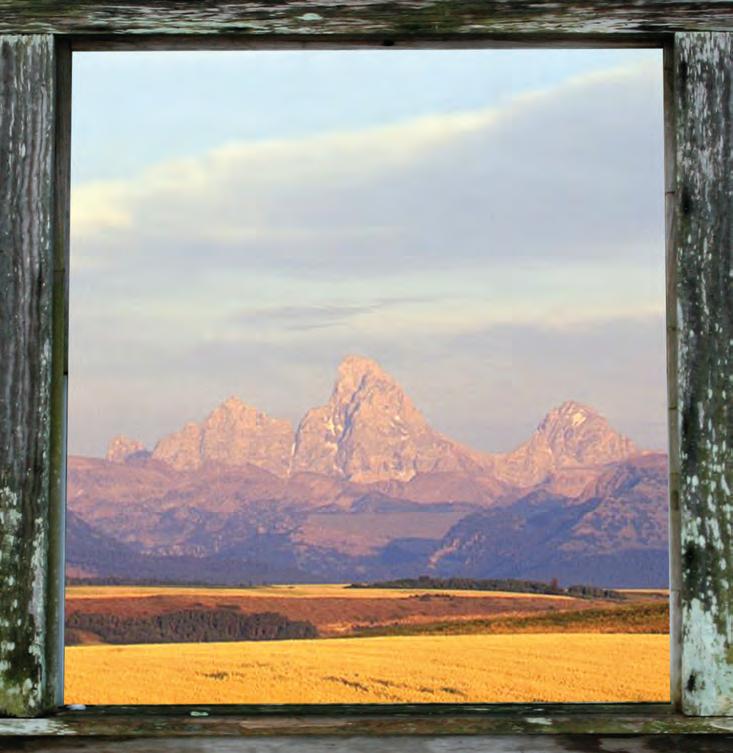

















who practiced before him. He advocates always on behalf of his patients and the community medical facility in order to best serve Teton Valley—even through the growing pains Teton Valley Health Care experienced in 2009, moving from a county-run facility to a private nonprofit. It was an uncertain road for staff and community members, but Horrocks soldiered on, attending board meetings, taking the Chief of Staff position, and practicing medicine one patient at a time.
“This is why I stayed. I love the area, I love the people, I love my practice. ... And things are looking up as far as this hospital being able to serve the community.”
“This is why I stayed,” he says. “I love the area, I love the people, and I love my practice. The business side and politics of medicine was something I never wanted to be part of. I enjoy the interaction between patients, whether
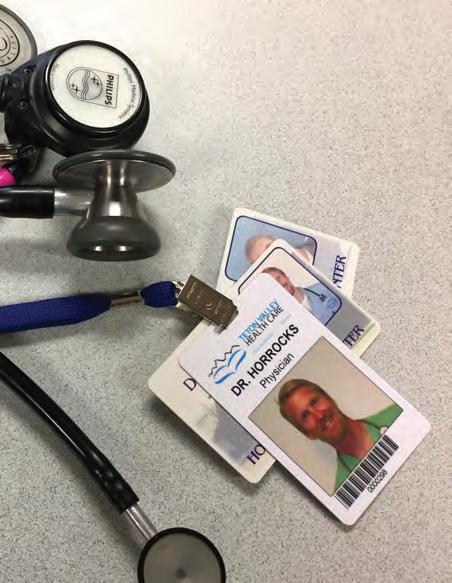
DR. HORROCKS HAS ACCUMULATED MANY I.D. TAGS FROM HIS YEARS AT TETON VALLEY HEALTH CARE.
or not they can pay. I put my trust into the people who can make the hospital a financially viable place. And things are looking up as far as this hospital being able to serve the community.”
Horrocks watches and participates as Teton Valley Health Care continues to evolve. He says he now sees a lot of different patients, with a variety of needs and expectations, who are coming from bigger health care systems. They, in turn, have bigger expectations for service. Hospital leaders have responded to these demands, such as by bringing in more specialists, he says.
What remains constant is the joy Horrocks finds in serving each and every patient.
“I think what really gets me through everything are the patients and the people that put their trust in me,” he says. “I get more from them than they get from me. I can go home and rest easily at night, knowing I’m doing everything I can to further their health. You just keep doing what you know best.”
With that, the doctor’s cell phone rings. It’s his son, calling to ask if he needs anything at Broulim’s. True story.

- Exceptional care, comfort, and privacy
- Beautiful setting with views of the National Elk Refuge
- Well-appointed suites featuring abundant natural light
- In-room labor tubs for patient comfort
- Cesarean section rate far below national average
- Breast feeding rate well above the national average
- Support from certified lactation nurses in hospital and after returning home
- Prenatal care services
- Monthly groups for babies and families


‘Bullaro’ of a therapist follows the neural pathway less traveled
BY MEL PARADIS

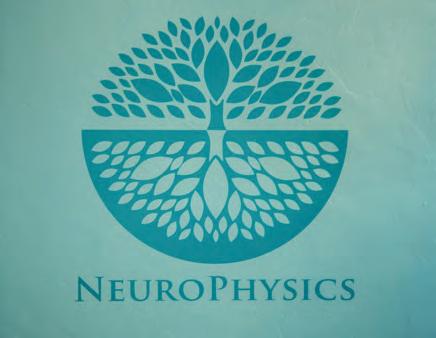
LEFT AND ABOVE: JILL RUNNION’S PRACTICE HAS EVOLVED OVER TIME TO INCLUDE PATIENTS WITH ACHES AND PAINS AS WELL AS INJURED ATHLETES. HERE SHE WORKS ON LOCAL CYCLIST GARY CHRISMAN.
When I first met Jill Runnion, I was struck by the warmth and intensity she seemed to bring to everything she does. Now, later, she greets me with a tender hug and launches into a passionate explanation of the neurological reboot she is currently undertaking with a Spinal Cord Injury (SCI) patient. She even pops out her cell phone to show me a video of a client who she says is making remarkable progress.
As the owner of Synapse Center for Neuro Re-Activation and a new NeuroPhysics Therapy Clinic, Jill is dedicated to taking on injuries both big and small.
In 2006, Jill learned about Tetonia resident Porter Broughton’s traumatic car accident resulting in a C7-T1 SCI. The accident left Porter as a quadriplegic, with some arm function.
Jill, whose formal training as a Physical Therapy Assistant took place at La Salle College in Massachusetts, had been practicing a holistic style of PT on the East Coast for more than fifteen years.
“I felt called, as if this was what I was supposed to do,” Jill says, regarding Porter’s situation. She met with him and his family and decided to pack up her life and move to Teton Valley to assist in Porter’s rehab.
The early work Jill did with Porter consisted of Integrative Manual Therapy (IMT) and re-education exercises. “Jill has the sensitivity to detect when there is a potential impulse,” says Porter’s wife, Ann-Toy Broughton. “When Porter may not have, Jill instinctually knew something was there to capitalize on. That is a gift.”
Once the impulse was discovered, Jill would put Porter to work “elaborating” on it while harnessed above a treadmill or on a retrofitted motorized elliptical machine. Within a few years, Porter was going against the odds, moving his legs and toes, sitting up and standing.
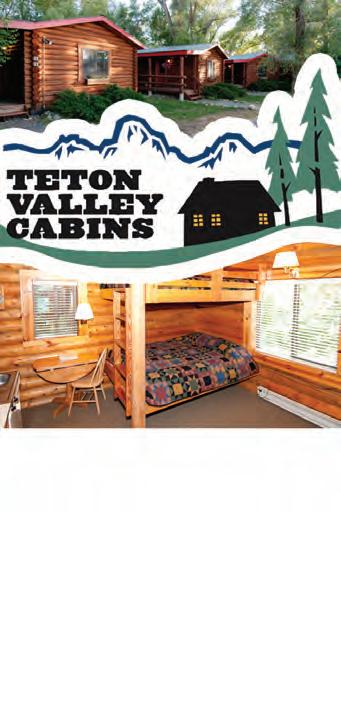
Ski great powder on both sides of the Tetons...for less bucks!
10 minutes to Grand Targhee HBO – WiFi Hot Tub – Kitchenettes Welcoming Reunions and Groups Affordable Rates and Specials (866) 687 1522 www.tetonvalleycabins.com Every Day 7 AM to 9 PM 787-2230 Main


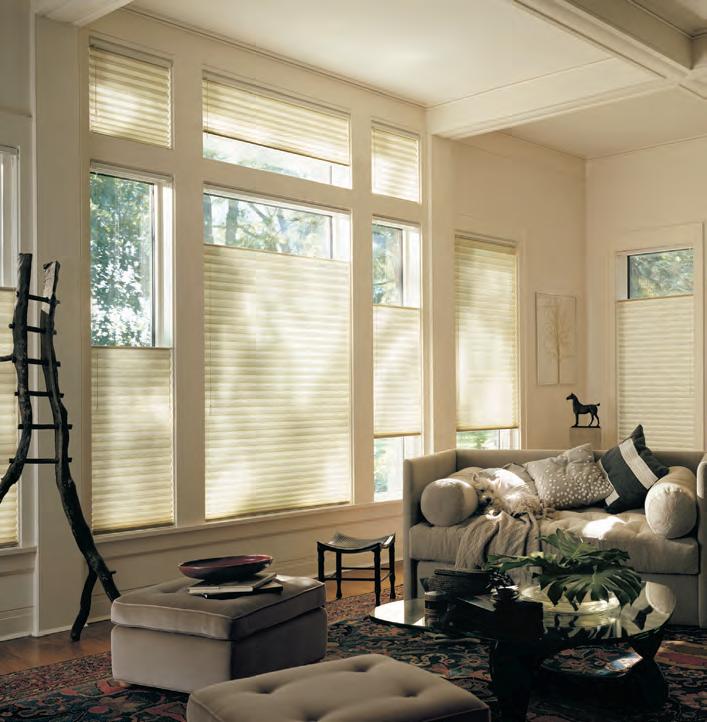
• 42" x 18" opening area
• Sleek hideaway glass and screen doors
• Burn up to 30" logs for more ambiance
• Drawbridge grate and hinged glass door for easy maintenance



“Following the latest paths of recovery has always been my goal,” Porter says. “I wish I was walking five years ago, but I’m not quitting.”
“Jill has always been insatiably curious about what is available, never stopping her research on the latest and greatest neuro-recovery findings,” adds Ann-Toy.
In 2015, Jill saw a segment on 60 Minutes Australia about a paraplegic man who had become able to walk unassisted. It happened after the patient worked with Ken Ware, creator of NeuroPhysics Therapy—according to its website “a scientifically based program that allows for the complete physical and emotional recalibration of the human nervous system to restore optimal health and system integrity.” The show explained that the latest spinal cord injury research showed the brain can establish new synaptic connections and neural pathways around the injured location.
“With NeuroPhysics, your body takes on its own healing. It does its own upgrades.”
This was exactly what Jill had instinctively been doing with Porter. However, she says, she found it astounding how quickly the Australian man was recovering. She knew that NeuroPhysics would be her next pursuit. Eventually, she traveled to Australia to train side by side with Ware for six weeks.
Jill explains that the recalibration happens when a patient focuses in an inwardly composed manner, using workout equipment to comb through the nervous system to see where there is a noisy signal. One example is a patient using a chest press. The weight is set low and the patient closes her eyes, relaxes, and moves the machine consciously, one centimeter at a time. Where a disruption in the nervous system exists, it can be displayed by
the body as uneven, ratchety, or shaky movements. When these movements are allowed to happen and then elaborated on, they allow the nervous system to find new order, which can open blockages for new neural pathways to form.
“With NeuroPhysics, your body takes on its own healing,” Jill says. “It does its own upgrades, resulting in improved function.”
This past summer, Jill opened the first NeuroPhysics Therapy Clinic in the United States. She set up the specialized gym equipment in the building on East Little next to her existing practice. “Synapse is a nice adjunct to NeuroPhysics,” she says. “People can establish new pathways with NeuroPhysics Therapy and then go next door to rehearse its practical use on certain equipment we have designed for reducation purposes.”
Over time, Jill’s practice has expanded to include patients with everyday aches and pains as well as athletes looking to return from injuries. Parttime valley resident and competitive Nordic skier Mariah Bredal is one of those athletes. After a year with chronic back pain, Mariah was at her wit’s end. “I had been unable to exercise for longer than twenty minutes without pain,” she says. “After just a week with Jill working with me, I was able to go for an hour long run. I go to one of the best ski schools in Norway. Jill gave me a workout plan that I will continue there. I still can’t fully train, but I’m on my way.”
“You won’t meet anyone with more dogged determination and dedication [than Jill],” says Ann-Toy Broughton. “She’s like a pit bull, but also a kangaroo willing to jump and explore any interesting possibility she learns about. She’s a bullaroo.”
Whatever you want to call her, Jill Runnion is helping people in the Tetons and beyond change the landscape of their individual nervous systems.
“Anyone with a nervous system can benefit from this,” says Porter.
I guess that includes us all.
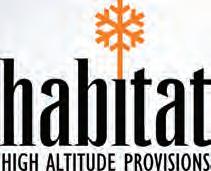





BY
t’s January, and the temperature is below zero. I stand outside, jumping up and down while waving a rolled up tube of wool and yelling at my two-year-old blue heeler mix, Juneau—June for short. My fiancé (now husband) Kenny kneels by June’s side about a hundred yards away, getting her psyched for what’s coming.
“Are you ready to work?” he asks.
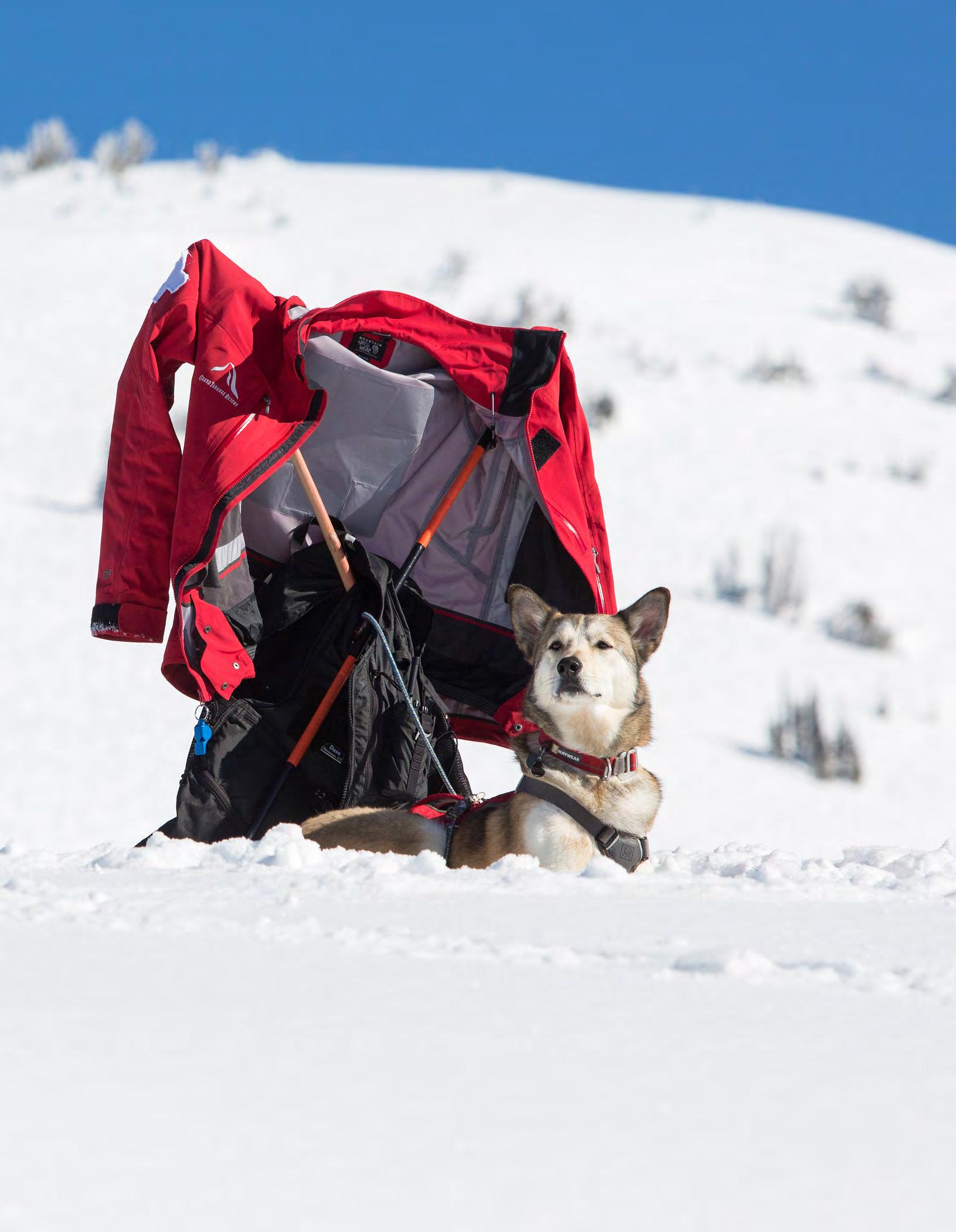
“Are you ready, June?” I hide behind a snow pile, peeking around the corner to see June getting visibly excited.
Kenny releases his grip and June takes off like a bolt for the snow pile where she quickly finds me and grabs hold of the wool tube. We play a little tug-of-war as her reward.
Although it sounds like play, Kenny is practicing runaways, a dog-handler skill he uses while working with the ski patrol’s avalanche dog team at Grand Targhee Resort.
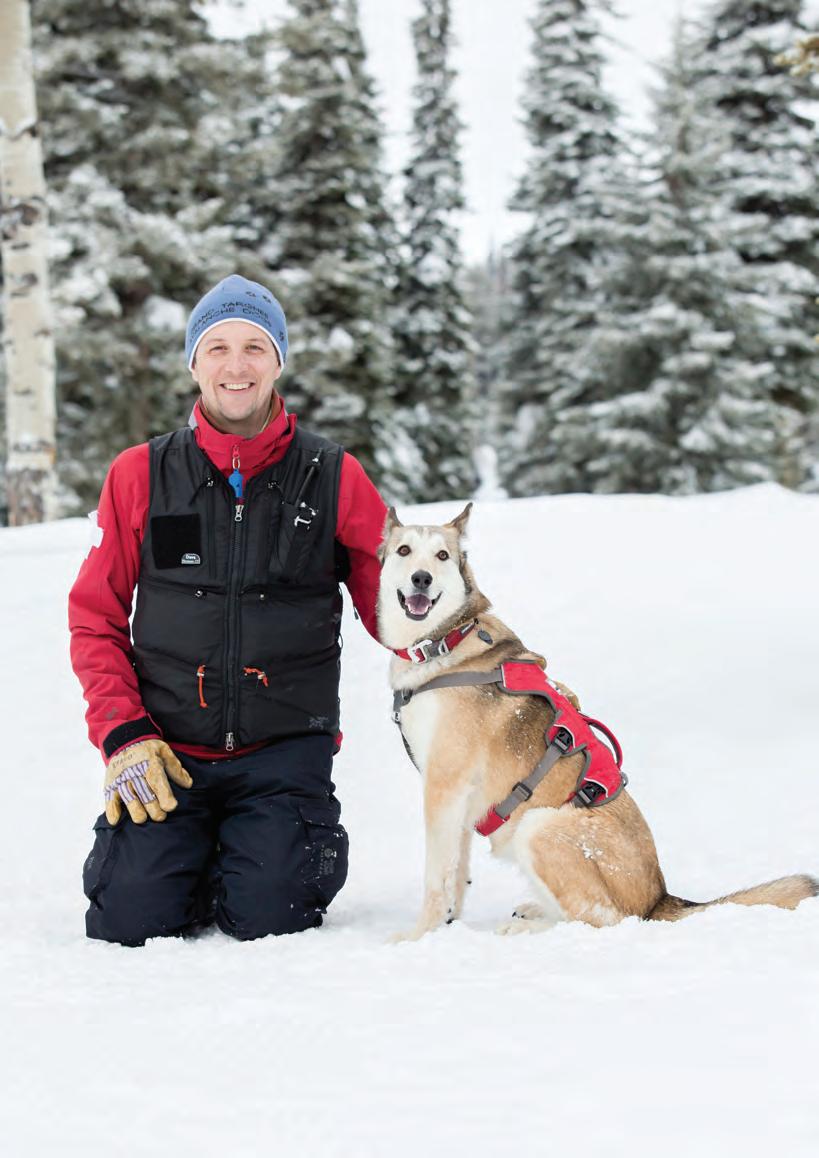
ABOVE: DAVE THIBODEAU AND YUKI TRAVELED TO CANADA TO PARTICIPATE IN CARDA TRAINING. ALTHOUGH AMERICAN DOGS CANNOT BE CERTIFIED THERE, THE DUO RECEIVED A POSITIVE EVALUATION.

Grand Targhee has utilized avalanche dogs as a part of their patrol team for more than twenty years. What started with one or two handlers and their dogs has grown into a nonprofit called GTK9. The organization offers training and protocols that help produce some of the best search-andrescue (SAR) dogs in the region. The group raises over $20,000 annually to sustain the program needs.
This winter, ski patrol director Joe Calder, alongside his veteran avalanche dog Otter—an eight-year-old springer spaniel—is excited to bring seasoned patrollers into the program, including fourth-year ski patroller Michael Cote and his year-old black Labrador Fen.
“It is a tough thing because it is so committing,” Calder says. “Finding people who want to be around for a while and put the extra work in. It takes a lot. Now, though, we have a program that supports that.”
The GTK9 method utilizes the Canadian Avalanche Rescue Dog Association’s (CARDA) criteria for training. Canada has a nationally recognized standard backed by the Royal Canadian Mountain Police (RCMP), the national police force of Canada.
Jason O’Neill, a former ski patroller and avalanche forecaster at Grand Targhee, brought the system to the resort in 2002 after working as a patroller in Canada. While living up north, he trained his first avalanche dog and became familiar with the CARDA method.
“Jason and I got together and decided that we could create a system,” Calder says, “so that we would have a structure, training plan, support system, and access to available resources to create a lasting program [to] create better handler-and-dog teams.”
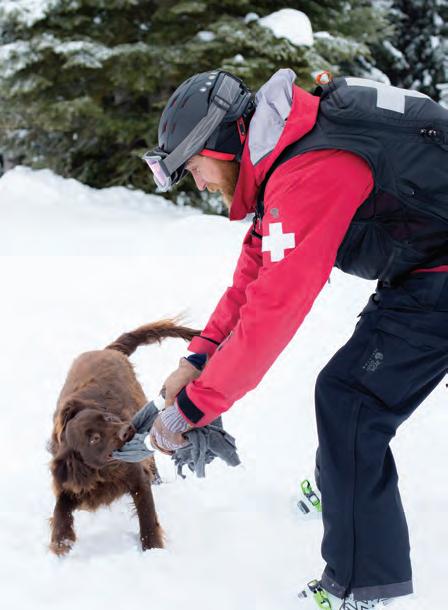
ABOVE RIGHT: GRAND TARGHEE SKI PATROL DIRECTOR
JOE CALDER AND AVALANCHE DOG OTTER ARE THE MOST SEASONED TEAM IN THE PROGRAM.
ABOVE: CALDER REWARDS A SUCCESSFUL FIND WITH A GAME OF TUG.

CARDA trains both the handler and the dog with a unique system derived from Swiss Alpine Rescue methods and the police dog training program used by the RCMP. What makes the program special is the nationwide buy-in that has led to the adoption of searchand-rescue criteria and the RCMP dogtraining manual used across Canada. This leaves few questions regarding how things should be done or managed.
The foundation of CARDA is a combination of scent training, which uses buried wool articles, and the Swissbased tactic utilizing snow piles to bury or hide people. The early stages of training focus on runaways.
“The CARDA system brought a lot of the standard criteria for working police dogs to the avalanche world,” O’Neill says. “CARDA figured out how to make better working dogs and do it faster and more efficiently. It used to take three or four years to train a dog, but now we can do it in a season of puppy work before moving on to more advanced training.”
The United States has no acrossthe-board standard for search and rescue dog training, let alone avalanche training. O’Neill explains that avalanche standards differ from state to state; search-and-rescue standards can even differ from county to county.
“The National Association for Search and Rescue has standards, the National Ski Patrol has standards, each individual resort has their own stan-
dards, and so on,” O’Neill says.
His goal was to create a better system, at least in the Intermountain West, in hopes of helping SAR people conduct searches that are as fast and straightforward as possible. Using the CARDA system to internally validate dogs and their handlers, avalanche dog groups throughout Montana, Wyoming, Idaho, and Utah now have a regional validation system built through relationships, annual meetings, and clinics.
“The purpose is all of those groups getting together, agreeing on standards, testing each other’s dogs, and ensuring everyone is well prepared,” O’Neill says.
O’Neill has stepped back from ski patrolling fulltime, but he is still focused on training top-notch dogs. He now works for the American Avalanche Institute and hosts K9 Training Courses at Grand Targhee.
Handler and dog teams from the Intermountain West are invited to participate in a four-day course set at the resort that focuses on different progressions of avalanche search-andrescue training. Groups are divided up based on experience, and teams progress from live runaways to buried articles (scented wool) and, finally, to multiple burials.
“We learn from working with other programs … helping our program get stronger, too,” Calder says. “The clinics help spread the program regionally. It is really cool to see, as far as the evolution of the program goes.”

CANINE-HANDLER TEAMS FROM THE INTERMOUNTAIN WEST PARTICIPATE IN THE AMERICAN AVALANCHE INSTITUTE’S K9 TRAINING COURSES AT GRAND TARGHEE.
If you’ve skied at Grand Targhee Resort, odds are you’ve seen a fourlegged helper running alongside a ski patroller, wearing a red vest with the white cross rescue symbol. The current team comprises Otter, Calder’s springer spaniel; Yuki, a five-year-old husky-blue heeler mix; and Fen, Michael Cote’s young black Lab. Cote joined the crew last winter, when Fen was just nine weeks old.
“I started working with Fen as soon as I got her, and I fell in love with the bond that it created,” Cote says.
Cote and Fen were able to dive right into the progression of training thanks to the support of the rest of the ski patrol team. “It takes a lot of people to help you train your dog,” he says. “With me not knowing anything about how to train an avalanche dog prior to getting Fen, this crew was so supportive and got me on the path.”
Cote says Fen was the perfect dog for the challenge. She has a strong drive and desire to please her handler. These are key traits for a pup, says Dave Thibodeau, a veteran ski patroller and Yuki’s handler. Thibodeau, in his fourth season with the program, says the process starts with training the human.
“It is the handler that needs training,” he says. “All the dogs get it. If they have the right energy level and the right obedience, they can come to work and understand this game very quickly. The handler is the one who has to learn patience and control [and] how to better communicate with their dog.”
Key behavior traits Thibodeau looks for in an avalanche dog are high energy and a strong “play and prey drive,” meaning their chase or search instincts.
Thibodeau and Yuki traveled to Canada in 2015 to go through CARDA training. Although a dog from the United States cannot officially receive
validation from CARDA, the group will evaluate the dog and handler as if they were eligible, a process all of Grand Targhee’s dogs go through. Each year, only four dog teams from the United States have the opportunity to train in Canada, according to O’Neill.
Thibodeau and Calder play key roles in helping bring new dogs into the fold. Fen’s path began with basic obedience training designed to determine if she could become a successful working dog and, in canine terms, a professional on the mountain.
After obedience training, Cote and Fen moved on to learning the main game, finding someone in the snow. This began with runaways, the exciting game of hide and seek where someone hides with a wool article. The pup watches, then goes to search.
“You get the dog ramped up and their prey drive kicks in,” Cote says. “‘Oh, that looks like a rabbit or some sort of prey.’ It touches on some inner desire to chase. Early on they are very easy and very short. You run, let the dog see where you go, and give another yell right before you hide. From there, you add on little things to make the progression more challenging.”
The handler will add more obstacles for the “victim” to hide behind, maybe a heavily treed or very brushy area. Then he will add distance or more waiting time for the dog. Finally, the dog will not see the person hide at all and will have to rely on scent to find him. This is called a blind runaway.
The next step? Burials.
“You start by burying people in snow caves, first without a door,” Cote says. “Then you do a half door or they are buried completely.” The final step is having the dog find articles buried in the snow. The handlers use a scented chunk of wool and progressively bury it deeper and deeper in the snow. By the end of the training, the dog should be prepared to locate a victim in the event of a rescue operation.

ABOVE: PROGRAM NEWCOMERS MICHAEL COTE AND FEN BEGAN THE EARLY STAGES OF AVALANCHE DOG TRAINING LAST WINTER. BELOW: PATROLLERS PRACTICE FINDS DURING A TRAINING COURSE.

The dogs are a vital component of the Grand Targhee Ski Patrol’s preparations to carry out rescue missions inside the resort and directly outside its boundaries. They regularly practice drills for any situation that may arise. They practice with avalanche transceivers. They practice digging scenarios using probes, and shoveling to break through hard-packed snow. Even under controlled conditions, these take a lot of time. A dog can shave valuable minutes off the efforts and reduce the risks faced by the rescue team.
“The dogs don’t care if you have a beacon or any other technology on,” Cote says. “They are homing in on something we can’t, and the speed is astonishing.”
“A dog does not discriminate, they can search a football-field size area in under thirty minutes,” O’Neill adds.
During those trying situations when a dog team is needed, the training efforts are validated. This past winter, a member of the GTK9 team recovered the body of a skier who had ventured outside the resort boundary and broken through a cornice, causing an avalanche. A search that could have lasted hours was cut short.
“If we didn’t have dogs, our patrollers would have been exposed to another six hours of night, potentially,” Calder says. “Or we would have had to shut down operations until the next day.”
Although a tragic scenario, GTK9 did their job well.
As O’Neill looks to the future of the program, he hopes to continue training fast, efficient dogs, and maybe add another clinic to the schedule.
“I would like to see this training spread throughout all of the Mountain West,” he says. “All I want to do is save patrollers time. There is a lot on their plate. That is what I see the workshops doing: teaching ski patrollers how to do basic dog training quickly to get better, faster dogs.”
At the eastern base of the Big Hole Mountains, Jake Kunz conducts business over the phone while standing in his office doorway. He gazes west into the thick forests hiding his favorite Big Hole trails. Scanning east, his eyes follow the sloping rolls of land that have nurtured his family for five generations.
In the heart of Driggs, Rich Rinaldi pulls up a tall stool behind a counter and cash register. The white, two-story home of Yöstmark Mountain Equipment is neatly quartered into small retail squares holding skis, boots, clothing, and maps and camping supplies. Drawn to the mountains since childhood, Rich left the confines of Connecticut to move west for college and soon after settled in Teton Valley.
Less than a block away, Juanita Flores organizes the bright colors and ribbons and lace of the dresses hanging near the front door. The kids will soon bustle in after school to practice for the upcoming folklorique performance. Her office is marked with small letters on the glass door—Teton Valley His-
BY LIZ ONUFER
BY JAMYE CHRISMAN
panic Resource Center. Juanita arrived in Teton Valley in 2002 and has stayed because, she explains, her family loves it here.
Jake, Rich, Juanita—their names aren’t on the ballot for elected positions, their words aren’t often quoted in the local paper. Rather, their conversations occur in the minutes unrecorded, at back-to-school meetings and in the aisles of the grocery store, Sundays in church, and at local events and celebrations. Their influence is felt through their daily work and service to the community. They have goals and visions and hopes for Teton Valley that mirror those of many local residents.
But as Teton Valley faces greater challenges and deeper transitions, these local perspectives are often drowned out by louder voices of disagreement and contention. Facing some of the toughest issues—population growth, conservation, and planning for the future—eight residents offer a look at Teton Valley through their lenses.
How do we plan/transition for this? How do we respond to the needs of more residents, such as roads, recreation opportunities, education, emergency services, and housing?
Ann: We need to know what our community values. We need to know what we have in common versus what we don’t. We need to look beyond numbers; it’s demographics. How do we respond to the needs of different community members? We could have five thousand more people here [with] half of them low income and the other half second-home owners. You have to find those bridges.
Teton River
Carrie: Our county and city governments face the challenge of being a rural economy. They don’t have a lot of resources to help with social issues. So the nonprofits are stepping in, filling the gaps and taking responsibility. If it weren’t for the nonprofits, we wouldn’t have an animal shelter, a hospital, the Family Safety Network. Because we are a rural community with limited resources, I see the answer now and in to the foreseeable future [to be] nonprofits.
Rich: The best thing is to plan … so that the people who want to live here can afford to do so. I’ve seen young teachers come here and then move on because they can’t afford it, or [they] get a better job elsewhere. It’s a big impact. We are losing good people that could be a part of our community. We need to plan for it so we aren’t just another ski town where people can’t afford to live.
Rich has gone from Grand Targhee ski instructor to co-owner of Yöstmark Mountain Equipment in Driggs. He was inspired to move to the mountains from Connecticut more than twentyfive years ago, after watching the stresses of his father, a plumber, melt away on weekends in wild landscapes.

Ann arrived in Teton Valley for her honeymoon in 1996 and never left. Active in many local nonprofits, she is the director of public relations and marketing at Teton Valley Health Care.

Carrie gained appreciation for the challenges faced by many locals during her time working in the service industry. A Utah native and Teton resident since 2002, today she serves as executive director of the Community Foundation of Teton Valley.

Michael’s great grandparents settled in Teton Valley. His inherited connection to the land is reflected in his lifetime of work in conservation, research, and education. Michael was instrumental in the founding of the Teton Regional Land Trust.

Michael: We’ve lost some of our connection to nature, to the land. I remember teaching elementary kids—this is going back a few years—and very few of them had any understanding of agriculture. I found this stunning. When I was growing up, we were all involved in it in some way. Not many of us still work on the land, and our connection to nature is more ephemeral, not deep-seated.
What do we protect geographically, culturally, historically? What should be preserved? What have we lost already? What are the implications?
Jake: It’s not fair to expect all people to appreciate or want to protect a culture that is not theirs. With that being said, those who have deep roots here have the right to fight for and protect their culture and heritage. There’s that balance. Everyone has a different perspective of what that heritage is. How I view this area of Cedron is completely different from how some others see it. To me, it’s where my great-great grandfather immigrated from Switzerland, poor as a church mouse, and started milking cows. And it’s been passed on for generations. I don’t expect you to have that same [type of] appreciation.
Is there a middle/meeting ground for the different groups/ voices in the valley? What will it take to work together? What happens if we don’t?
Billie: One thing to protect is that spirit of cooperation that [historically] existed between all the different types of people. When the valley was first founded there was a school over in Hayden, which was a long ride for people down in the south end of the valley. A second school was established in Cedron, and all the parents came together to build the school. Each parent had to make a desk for their child. That spirit of cooperation really was the foundation for the valley.
Juanita: There is a lot of divisiveness within our own group because people are from different areas of Mexico, or people are coming over from Jackson. One way to overcome this is to create art festivals and celebrations related to Hispanic culture. I’m planning events where these kids can learn more about their culture; other people can join us and we can learn from other people.
Joe: As long as we keep going back and forth between candidates that run from both sides, either 100 percent right wing or 100 percent left wing, then nothing is going to happen. The [ironic thing] about it is they are all awesome people. I know if something happened, I could go to five families that have been here over a hundred years, or five families who have only been here five years. I trust them with my kids, but I don’t trust them with politics.
Billie: If we recognize that we need a bit of a patchwork quilt where there are opportunities for cycling and fishing and farming and ranching—one shouldn’t be at the exclusion of another—we can figure out a way to make it happen. We need to think of ways that make it economically feasible and accessible to all the people who are here now to do the things they need to do to maintain their quality of life.
What should be prioritized to maintain our quality of life? What will contribute to an improved quality of life?
Joe: Our quality of life is the best. … We are always going to disagree. Compromise would make a better quality of life here. But it would be less entertaining during election season.
Carrie: There are so many wonderfully gifted, talented people in this community— and so much opportunity for these folks to step up into leadership roles and take an active hand in crafting a thoughtful community. Inclusivity is important; not just the powerful leading the charge but the inclusion of all the voices. We need to be talking to immigrant families and the elderly, and thinking about children and people with disabilities. We’ve got to hear from everyone and find ways to include them in the decision-making process.
Michael: For a lot of folks these days it’s about recreation, about access to the tremendous recreation opportunity we have here. And that’s a big part of who I am. But I would hope that for the folks [for whom] recreation is the major perspective, they would recognize the need for places where we don’t recreate, where nature is allowed to function without disturbance. … I think we need to temper our pursuit of recreation a little bit. Take Teton Canyon, for instance. It used to be a huge winter range and now it’s the mecca for Nordic skiers.
Billie grew up working on the family sheep ranch, rotating residency dependent on the sheep grazing cycles. Her summers were spent in the mountains around Teton Valley. She is the newly elected Teton County prosecuting attorney

Jake is a member of one of the original families to homestead in Teton Valley. Today, he works in agricultural finance and is raising his own family on land that has nurtured his family for five generations.

Co-owner of Wilkinson-Montesano Builders, Joe moved to Teton Valley in 1999. He has served as the volunteer general contractor for the Kotler Ice Arena, the Teton County Fair Building, and the Family Safety Network.

Juanita Flores immigrated to the United States from Tijuana, Mexico, as a young teen. In 2002, she relocated with her family from Southern California to Teton Valley. For the last five years, she has served as the volunteer executive director of the Teton Valley Hispanic Resource Center.

Rich: We’ve made mistakes along the way and we’ve learned from them, and I think that’s progress. I think the greatest loss would be repeating some of the same mistakes we’ve made in the past.
What do you think has been, or will be, the greatest loss for Teton Valley?
Billie: Prioritizing the people here and their needs are critical. We need to recognize that the natural resources are a part of that conversation, but the people are the most important thing. When we lose sight of that, I think we are in trouble. It’s easier to go out and clean up a hiking trail than it is to help someone clean up their drug problem.
Ann: What will be our greatest loss and our greatest achievement are almost the same thing. Our county and community leaders need to understand that Teton County, Idaho, has forty nonprofits. When you look at what those nonprofits are doing, look at all the health and human services. This is not sustainable. We cannot keep asking the same people in our community to pay for community services … child protective services, mental health support, counseling, substance abuse, youth services, families in poverty. We need to house a community services program within our county, an actual county-supported department that reaches out to all these different groups and understands their issues.
Joe: The feel of Teton Valley. That’s what I’d be most afraid of losing; it has its own feel, from Fred [the late Fred Mugler] at Mountaineering Outfitters to SUBA [Sub-Urban Body Adornment in Victor]. It’s a unique place. People are nice. Even people from New Jersey move here and they’re nice.
Juanita: When my kids were in school here, they were the only Hispanics on the sports teams, one or two Hispanics on the basketball team, one on the volleyball team. Now I see a bunch of Hispanics on the sports teams. There are more opportunities; that is an achievement.
What do you think are, or will be, the greatest achievements in Teton Valley?
Rich: If we could band together to improve our public school system, we’ll [overcome] one of our biggest barriers to being the best of the West and [to] growing our economy.
Michael: We are connected to a much bigger landscape. Thinking ecologically, we have wildlife here that connect within and among populations on a much bigger stage. The wolverines that make their homes in the Tetons are connected to the population that goes all the way to Canada. The same is true economically, our role in the Greater Yellowstone Ecosystem and how that plays out for recreation. We are on the map.
What is, or could be, our role as a community in our region, state, and nation?
Jake: In regard to the region, we are a blue county in a red state. I would hope that we can show the rest of the state, and other rural communities going through what we are going through, that we can co-mingle. We can live together, regardless of political affiliation, religious beliefs, tax brackets. Regardless of all that stuff, all those titles, we can respect each other.
Ann: To an extent, we need to stop saying, “We are a rural community so we can’t do that.” Yes, we have limitations, and we have a limited tax base. We don’t have the economic growth we need to build a tax base. We are geographically isolated. We need to understand the art of compromise and accept it. That’s a tough one. But there is no reason why Teton Valley cannot be a model for how to care for your community. We have the right people, we have the right nonprofits, and I believe we have the means.
Sometimes, rather than leading us to the answers we are seeking, hard questions lead to even harder questions. But in these questions beyond questions, the conversation begins to circle around core values, answers that transcend the immediate or contentious topic at hand. When we unfold these core beliefs, the focus shifts to what we have in common—the value of accepting one another, the belief in compromise, and the spirit of community. In identifying what makes this place Teton Valley, we find embedded a love for the mountains, the river, and the valley. That can be our compass to the future.
Full interview transcripts, including quotes from two additional residents, may be found at tetonvalleymagazine.com

‘Sacred season’ provides a respite from the frenzy of summer
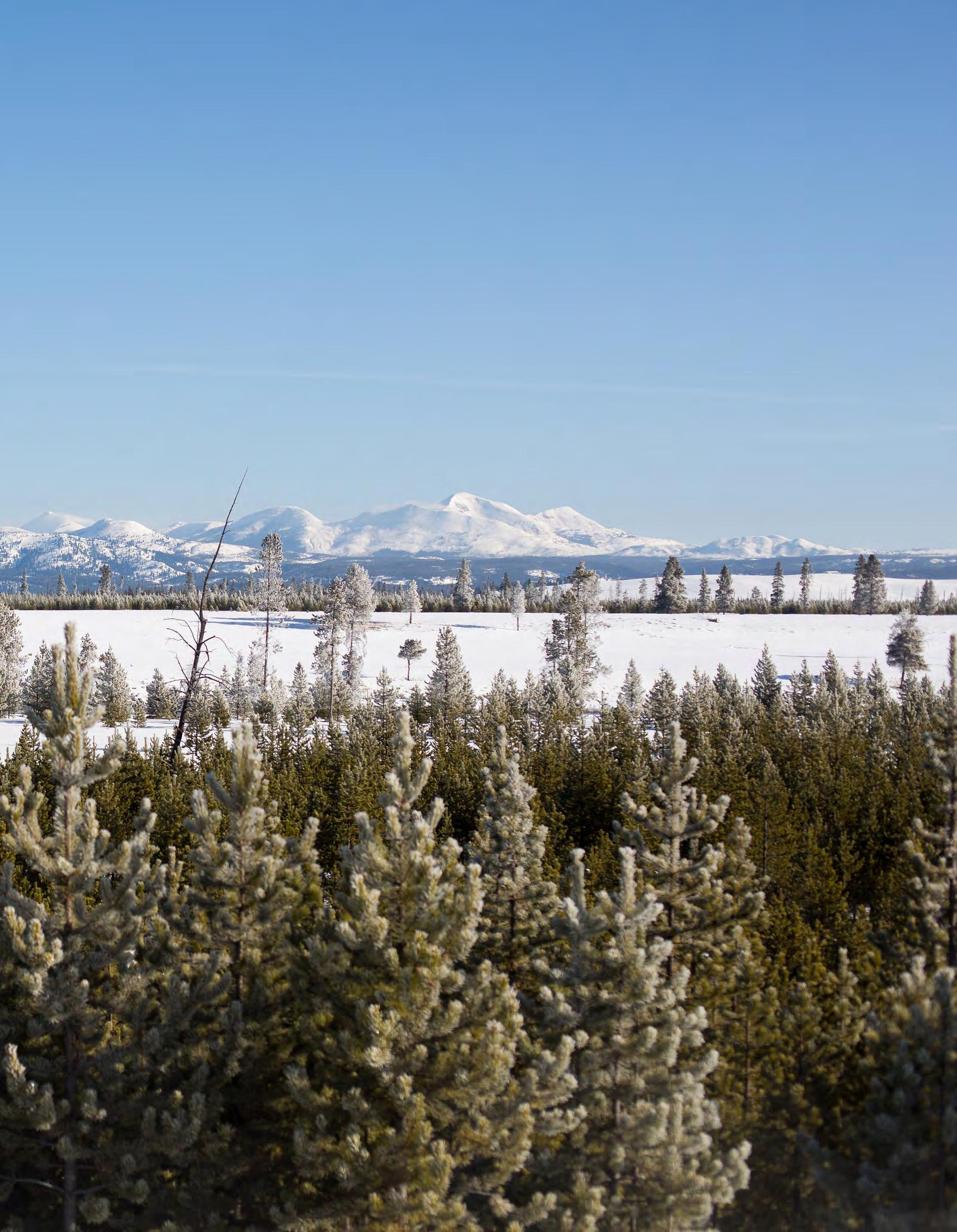
BY KAREN L. REINHART
PHOTOGRAPHY
BY
JAMYE CHRISMAN
RIGHT: MOTORIZED WINTER TRANSPORTATION IN YELLOWSTONE NATIONAL PARK GRABBED A FOOTHOLD IN 1949 AND HAS ONLY GROWN SINCE.


“People will surely awake to the fact that the Park has special beauties to be seen in winter … any hardy man who can go through it … on skis will enjoy himself as he scarcely could elsewhere.”
–President Theodore Roosevelt in Gardiner, Montana
The president’s prophesy of April 24, 1902, came true, of course. But four decades passed before a significant number of tourists experienced Yellowstone National Park dressed in her pristine winter coat.
frost-enshrouded Norris Geyser Basin. But Schwatka’s lungs began to hemorrhage, and he returned to Mammoth.

Historians do tell us that the first officials stationed to protect the park’s resources recreated in the snow, more than a decade prior to Roosevelt’s prediction. Author Paul Schullery notes in Yellowstone Ski Pioneers that skiing was a popular activity by the time of Fort Yellowstone’s construction at Mammoth Hot Springs in 1891. (The U.S. Army, preceding the National Park Service, patrolled and protected Yellowstone from 1886 to 1918.)
The park’s first non-government skiers—hardy souls who strapped on long, heavy boards—were not there for fun. Rather, they were poachers who took advantage of the park’s winter-weakened wildlife and the animals’ slowed movements, hampered as they were by deep snow.
Although Yellowstone was established in winter—on March 1, 1872— it would be a hundred years before people could travel to Old Faithful confident that full-service winter lodging awaited them once they got there. A big step toward that was made when zippy, fuel-powered transportation began supplanting human power in 1949.
The first Yellowstone ski adventure unfolded in January 1887. Lieutenant Frederick Schwatka, an experienced Arctic explorer, and seven men, including photographer Frank J. Haynes, skied from Mammoth pulling heavily laden toboggans bound for the interior. Encountering minus-thirty-degree temperatures, they witnessed a steam- and
Haynes wanted to continue taking photographs—the first winter images of Yellowstone—so he and three others pushed on. The men skied toward Mt. Washburn north of Canyon when an unexpected blizzard hit, forcing them to hunker down for two days with only lunch in their pockets and no axe, blanket, or compass. Finally, the exhausted and hungry men reached John F. Yancey’s Hotel near Tower, where the hospitality of the proprietor, known as “Uncle John,” probably saved their lives.
Better prepared than the Schwatka group, T.E. “Uncle Billy” Hofer and a friend set out on skis from Gardiner the next month. Hofer wore an undershirt, a short-sleeve antelope skin (“Indian dressed”), a California flannel shirt, a wool shirt, vest, and buckskin jumper followed by a pair of mission drawers, pantaloons, and canvas overalls. Fine cotton socks and calf boots were covered by Arctic overshoes with canvas leggings fastened by buckskin strips. He donned a white felt hat and, to further battle the cold, a jersey cloth hood and face mask. Two silk handkerchiefs insured against cheeky insults of wind; smoked spectacles kept snow blindness at bay; and, finally, gloves and leather mittens covered his hands. What a contrast to today’s high-tech, lightweight clothing!
And then there were the boards. Early skiers had to work much harder at having fun than people today. Imagine lacing up heavy leather boots and strapping them on to ten- to fifteen-footlong wooden “snowshoes” or “Norwegians”—later called skis—that weighed at least twenty pounds per pair
Old-fashioned skis often had a strip of hair-on elk hide tacked to the bottom to prevent skiers from slipping while skiing upslope, akin to today’s stick-on skins. To slow their descent, they used

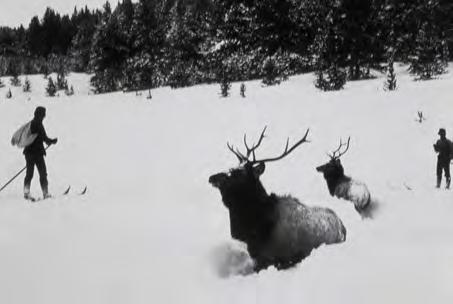

ABOVE: BULL ELK REPOSE IN THE SNOW DURING THE 1887 HAYNES EXPEDITION.
RIGHT: MODERN SHOT OF THE GRAND CANYON OF THE YELLOWSTONE RIVER IN ITS WINTER FINERY.
a single heavy, wooden pole, perhaps with a tin can lid nailed to the bottom, a precursor to today’s pole basket.
Hofer recommended Yellowstone winter travel in a January 1888 Forest and Stream article, with the caveat that individuals hire a guide and a cook, and bring their own bedding. Though park hotels were closed and unheated, skiers could buy provisions from hotel winter keepers and sleep under a roof.
Wrote Hofer: “Take the rough with the smooth and … endure a certain amount of fatigue and cold in exchange for the pleasure of such an excursion.”
Explorer and author Lewis R. Freeman wrote of an April 1902 two-week ski trip in his book Down the Yellowstone. After arriving at Fort Yellowstone, he accompanied Army scouts on game patrol. The Army outfitted Freeman, attaching him to “a party of troopers detailed to pack in bacon to the station at Norris Basin.” What followed were daredevil ski runs and even jumps by Freeman, and getting treacherously close to cliffs and wildlife under the en-
couragement of his soldier-guides. Winter keepers came along for the fun— one of whom, according to Freeman, cussed up a mean streak because of his own ineptitude on skis.
After World War II, local people began looking for easier ways to access the park. Some adventurous souls jumped into snowplanes, an unusual contraption that skidded across snowy, open expanses. A product of the Canadian prairie provinces, the snowplane was a fuel-powered, rear propellerdriven, two-person cockpit on skis. Light aircraft engines produced anywhere from sixty-five horsepower on up; the skis, one in front and one on each side of the vehicle, were ten inches wide and more than seven feet long.
(See “Windjammers of the Snowdrifts” in our Winter 2010–11 edition, or online at tetonvalleymagazine.com.)
Thirty-five tourists, in nineteen snowplanes, rode into the park in January 1949.

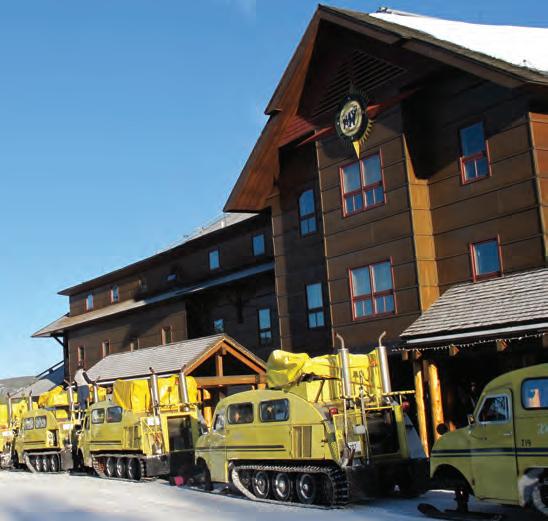
ABOVE: SOME 60 PERCENT OF THE WORLD’S GEYSERS ARE FOUND IN YELLOWSTONE’S UPPER GEYSER BASIN.
LEFT: A STALWART OF WINTER TRANSPORTATION IN YELLOWSTONE SINCE 1955, THE CANADIANMANUFACTURED BOMBARDIER OVERSNOW VEHICLES MADE THEIR FINAL RUN IN THE PARK ON MARCH 1, 2016.
In 1955, a pair of West Yellowstone hotel managers, Harold Young and Bill Nicholls, began offering snowcoach tours, taking up to five hundred people in each winter. Ten passengers could comfortably ride in their heated, Canadian-manufactured Bombardier oversnow vehicles. Park lodging concessioners began offering “Bomb” transportation to winter recreationists a decade later, in 1965.
On March 1, 2016, after fifty-one years of service by the Bombardiers, snowcoach drivers bid a fond farewell to the iconic yellow machines, signaling the end of an era. New winter regulations require the use of lower-emission and quieter oversnow vehicles. The new Van Terra vans are more comfortable for passengers, as well, and able to travel on pavement, important because roads in the northern part of the park often lack adequate snow cover. The vans can run on either the rubber, tanklike treads known as Mattracks or oversized, low-pressure tires.
In late December 1970, Jackson Hole resident Ken Thomasma, his wife, and their fourteen-year-old son rode a Bombardier from Flagg Ranch at the park’s southern boundary to Old Faithful on a three-day camping trip. Rudimentary road grooming at the time consisted of a snowcoach dragging a raft of logs to somewhat smooth out the bumps.
Their trip was one year before the original Old Faithful Snow Lodge opened. Inspecting the Thomasma family’s gear to determine if they were prepared for the predicted twenty-below temperatures, rangers found head-totoe down clothing. Park employees even packed the snow down in their camping area and dug out a snow-buried outhouse—a four-foot scoop down so the Thomasmas could open the door
The family skied around the Upper

Staying indoors: yellowstonenationalparklodges.com
Winter camping:
Backcountry permits are required in winter. They are free and available at the Albright Visitor Center in Mammoth Hot Springs and the West Yellowstone Visitor Information Center. For more information, call (307) 344-2160.
Bison swing their massive heads back and forth through the snow, seeking the previous season’s grasses.
Geyser Basin, north to Fountain Paint Pots, and east to Lone Star Geyser. Ken remembers one morning when his family watched Old Faithful Geyser erupt with no one else present. That’s a rarity today: On any one night, more than five hundred people might be staying at the new Snow Lodge, built in 2006. A bevy of employees live there, too. And that doesn’t include day trippers coming out of West Yellowstone and elsewhere.
Winter visitors can bring their own gear and plan independent adventures or they can rent skis or snowshoes at Old Faithful or Mammoth Hot Springs. Xanterra, Yellowstone’s lodging concessioner, offers an array of sightseeing, skiing, and snowshoeing tours. Xanterra also grooms a few ski trails, but most trails are skier-tracked. Skate skiers can glide on groomed roads, while snowshoers are asked to break their own trail.
Crystal Cassidy, parkwide manager of the ski shops for the past fourteen years, notes that more people are snowshoeing than skiing these days. Those staying at the Snow Lodge tend to be older and more cautious, choosing flatter, easier terrain. But even employees, who tend to be younger, ski less than in years past.
Some hardy individuals enjoy the solitude of backcountry winter camping in the park, though it appears that substantially fewer are doing it than three decades ago. Statistics for the South, West, and East Entrances show that during the winter of 1982–83, campers spent more than 4,200 nights in the backcountry, compared to just 605 nights in 2014–2015.
The trend in snowmobiling has proven the opposite of the decline in winter camping. The first six personal snowmobiles came into Yellowstone National
Park in 1963. Since then, the machines have grown wildly popular, a fact that prompted the Park Service’s 1968 decision to groom rather than plow roads in winter. (The exception is the North Entrance road to Cooke City, Montana, open year-round to automobiles.)
During the winter of 1992–93, approximately 90,000 people straddled snow machines and navigated park roads. Some Yellowstone proponents began voicing concerns of wildlife disturbances and of noise and air pollution. Yellowstone managers sought to balance visitor enjoyment with resource protection, as they do with all park issues. As anyone who follows the situation knows, winter use planning has been a long, controversial process.
Finally, in 2013, after years of public comments and multiple lawsuits, managers adopted a Final Winter Use Plan. Winter visitation is now managed flexibly, allowing daily up to 110 “transportation events.” An event is defined as one snowcoach or ten snowmobiles using the cleanest available technology. In addition to commercially guided tours, a few independent snowmobile groups are permitted. (Visit nps.gov/ yell/learn/management/currentmgmt. htm to read the plan in detail.)
While it does take some planning to orchestrate a winter visit to Yellowstone, most veterans would tell you it’s well worth the effort. The geysers keep gushing. Bison swing their massive heads back and forth through the snow, seeking the previous season’s grasses. Trumpeter swans swim on frigid but open waters. Everywhere, snow softens the landscape. Far fewer people are around. Despite the drone of oversnow vehicles, the quiet is still there, markedly more so than during the busy days of summer.
For me, winter is the park’s sacred season.

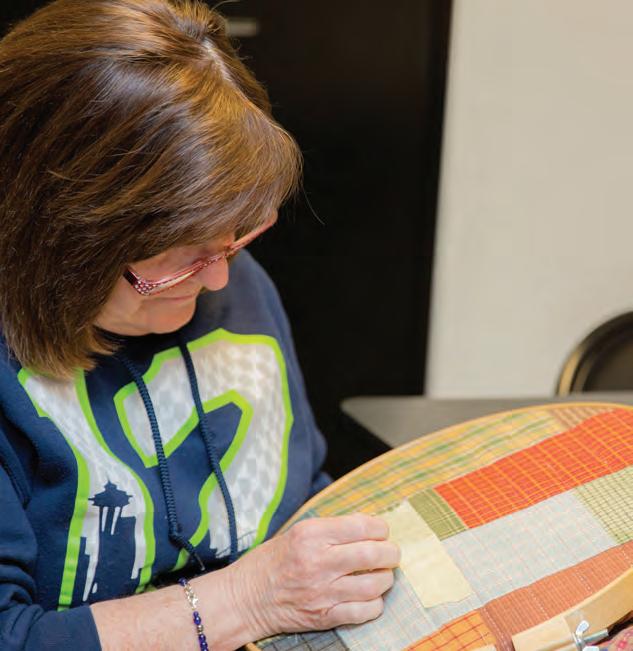
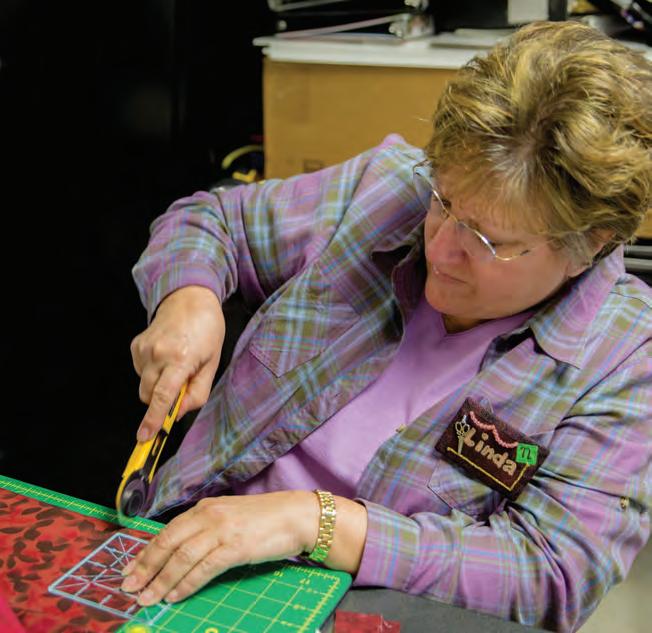
BY CHRISTINA SHEPHERD MCGUIRE PHOTOGRAPHY BY JAMYE CHRISMAN

OPPOSITE PAGE, LOWER LEFT: LINDA NELSON CUTS FABRIC SQUARES; UPPER
RIGHT: VISITING QUILTERS ARE ALSO WELCOMED BY THE SOCIETY.
RIGHT: THE FROG TOOL IS USED WHEN A QUILTER MUST “RIPPIT, RIPPIT.”
Lately, barring the occasional PTO meeting, I haven’t been in a room with more than six women at a time. So, I admit that walking into a quilting guild meeting with almost twenty attendees was intimidating.
This gathering at the Extension Office in Driggs introduced me to a covert group of artisans I didn’t know existed. Now, don’t get me wrong, I secretly claim artisan status myself, as a foodie who weaves the culinary arts into the fabric of my family. But people joining together cloth-made kaleidoscopes to form intricate creations were not on my radar.
attendance I encountered.
After a quick run-through of the business points and the elected positions up for grabs, the members started doling out charm squares. These sixinch fabric squares collected by fellow quilters when they travel are given as gifts to every member in attendance. Members save them for special projects like totes, or integrate them into a quilting block already under construction. This meeting’s charms included a subway map from The City Quilter in New York and a salamander pattern from 3 Dudes Quilting in Phoenix, Arizona.
Show and tell soon followed, as Mae Kramer debuted her kaleidoscope wall hanging in a striking purple and yellow
“It’s a type of fellowship,” says longtime member Belinda Hale.
Founded in 1996 by Gilly Hufsmith, the Teton Valley Loose Threads Quilting Guild brings quilters of all ability levels together for companionship, to learn and expand on the craft, and to give back to the community through donated efforts.
“It’s a type of fellowship,” says longtime member Belinda Hale. “Some people come for the tips, but others just come for the camaraderie and the treats.”
Belinda explains the structure of the nonprofit club: After paying their annual dues, members are given a club card that grants them discounts at regional quilting supply stores. Every first Monday of the month the club holds a business meeting; every third Monday is a work meeting, to which members bring personal projects to work on. All-day sewing get-togethers land on holiday Mondays throughout the year.
At the business meeting I attended, the members jumped right into the “biz”: officer elections, donation quilts, and summer picnic dates.
“No one used to show up for the business meetings,” explains Belinda. “Now, we have a demonstration at every meeting.” This explains the healthy
batik. She cautions the group to “make the pattern before you cut the strips,” or they may end up throwing cuttings away, as she did.
“You need to get the middle just perfect,” she adds, because sixteen seams adjoin there. Chris Miller—a beginner, I’m told—asks for a hand in showcasing her full-size quilt made in Dresden Plate, a pattern dating to the 1920s. To my eye, this earthy mauve rendition looks more like expert craftsmanship than a first-timer production.
After the meeting was over, I pulled Belinda aside to get the inside scoop on events like the Quilt Reveal and the Quilter’s Retreat. Last year, members were offered two projects to choose from for the reveal: 1) a Dresden Plate challenge or 2) a block-of-the-month challenge. For the latter, participating members were given monthly instructions for blocks that would come together to form a quilt.
There were seven participants and twelve quilts at the reveal. “Everyone’s [quilt] looked so different,” says Belinda, even though the baseline design was the same for them all. Quilts were dis-
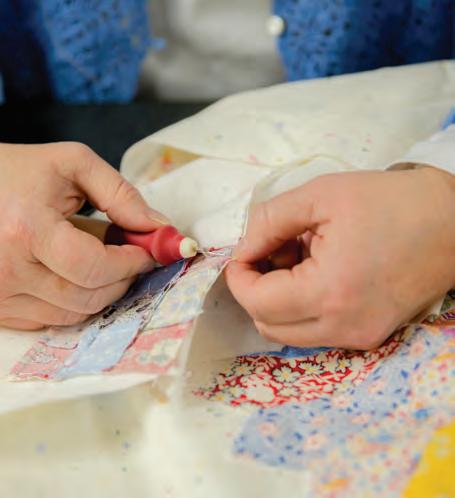
played at the Senior Center in Driggs, where members could view them and guess which was whose. Belinda liked the way everyone worked outside of their proverbial “box,” noting it was hard to pin the work to the artist.
“You were clueless,” she says, “[But] if anything had pink in it, we knew it wasn’t Lou’s. Lou [Vrabec] hates pink.”
The true personality of the group shines at the biannual Teton Patchwork Quilter’s Retreat. Organized by awardwinning quilter Lea Hardee and her husband Jim at their facility in Tetonia, the retreat attracts groups from throughout the region. But it’s the local ladies who really throw down for this staycation.
At the event, quilters—who rarely leave their jammies except to eat—set up shop at one of the retreat’s eight sewing stations, where the true bonding happens. They sew, eat plentiful treats, chit-chat, and relax.
“You always know who’s going to be opening up the wine bottle at five o’clock,” Belinda says with a giggle. And the massage chair named Sven? Well, “there’s always a line for Sven,” she says.
As the meeting adjourned, I couldn’t help wanting to linger with this group of ladies, in it as much for the community spirit as they are for the art. And I thought, maybe this group of artisans will take me under their wing this winter?
Who knows? Perhaps I’ll bang out my first wall hanging or learn the basics of the Log Cabin pattern. After all, I do know how to sew. But one thing’s for sure: I definitely want to experience a work meeting. If not to sharpen my sewing skills, then certainly for the cake and other treats.
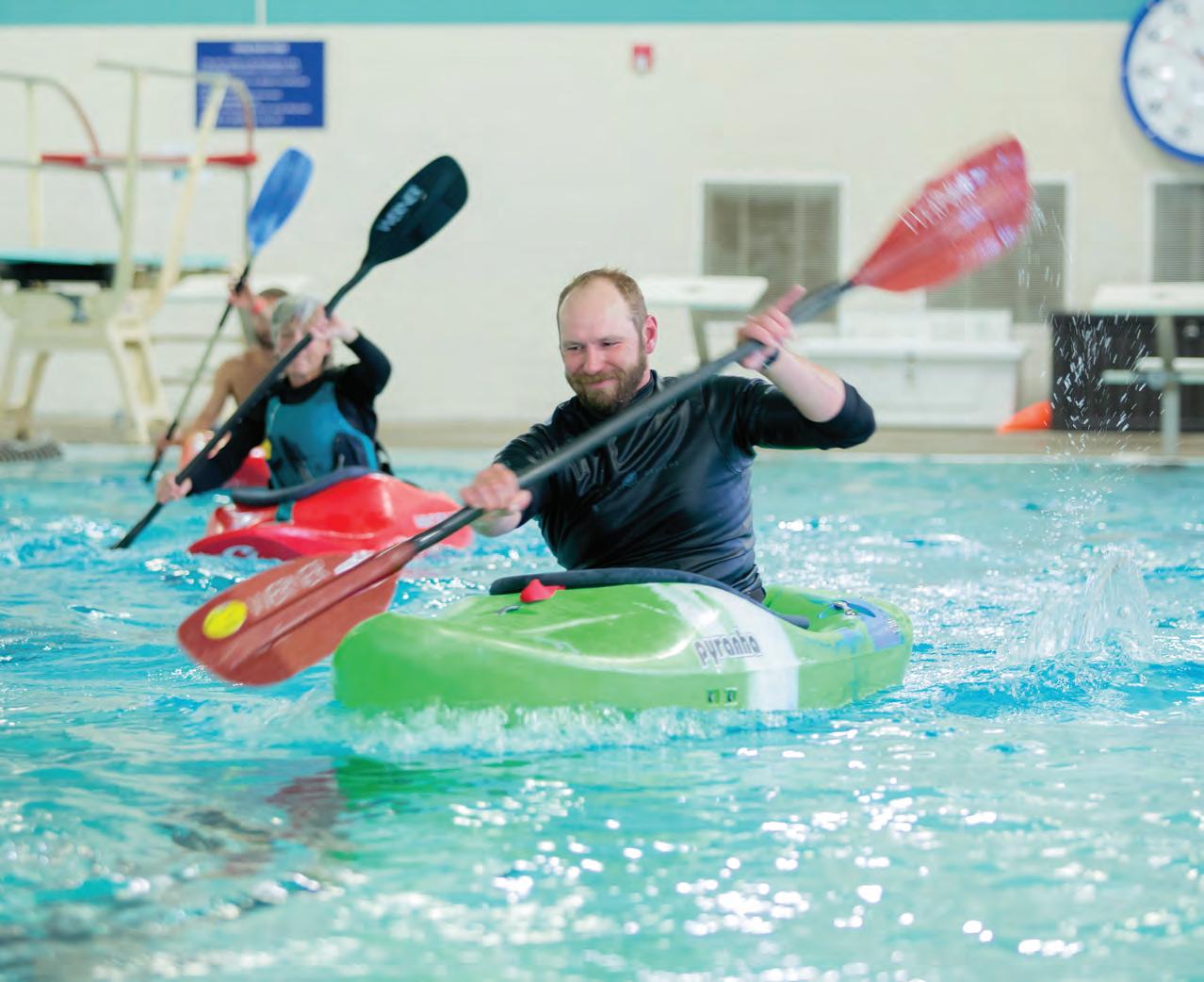
BY MOLLY ABSOLON
PHOTOGRAPHY BY JAMYE CHRISMAN
Learning
to roll, without the punches
ne, two, three.”
I counted to myself, took a deep breath, and flipped my kayak over. Suddenly the world was silent. I could no longer hear the din of voices echoing around the pool. I hung upside down, suspended in the aquamarine water, trying to stay calm.
I started counting again, waiting for a bang on the bottom of the boat—the signal that it was time to try to roll up. Numbers ticked through my mind, helping to keep my fear at bay. One, two, three … eight, nine, ten. Finally, my instructor smacked the kayak, and I rotated my paddle to initiate a roll.
I managed to get halfway up before flopping back over and under. The instructor grabbed my paddle and swept it around for me, holding it steady to help me come upright again. I sputtered, pushed my wet hair out of my face, and turned to her. She told me what I already knew.
“You’re bringing your head up too soon. Wait. Your head comes up last.”
I tried again. And again. My instructor patiently guided my paddle, coached me through my mistakes, and helped me to the surface. She seemed unruffled by my failures. I became more and more comfortable hanging upside down in the kayak with my legs trapped in the boat—a position that had seemed terrifying when I’d thought about it while driving to Jackson from Teton Valley earlier that evening.
Now, as I practiced, I began to feel what I needed to do. I remembered to leave my head down until last. Finally, I managed a few successful rolls on my own before calling it quits for the night.
Teton County/Jackson Recreation Center has been hosting kayak roll sessions in its pool since the center opened in 1995, according to Aaron Pruzan, owner of Rendezvous River Sports and the Jackson Hole Kayak School. Pruzan is one of those responsible for getting
the roll clinics on the rec center’s annual spring calendar back in the nineties. For Teton Valley residents, Jackson’s aquatic center is the closest public pool where they can practice rolling in preparation for the boating season.
“We live in a cold place,” Pruzan says. “It helps to get on the water to practice your skills before you hit the river. So, it just made sense to get a pool program going when the rec center opened. People want to learn the skill.
“It’s fun to watch people succeed,” he adds. “We had a bunch of local kids in a session last week and all of them got a roll. They were so excited. It was like they had an epiphany out there.”
I sputtered and pushed my wet hair out of my face.
The ability to roll a kayak helps make boaters safer and more self-sufficient, allowing them to self-rescue and giving them the confidence to push toward more difficult objectives; to try tricks and to play out on the water regardless of whether it’s moving or not. In our area, perfecting this skill can be tricky without having access to an indoor pool with warm water. Even in the middle of summer the water outside can be cold, making it hard to hang upside down in it for long.
The rec center and Rendezvous River Sports offer open pool sessions one night a week from February through May. Open sessions are for people who are already comfortable in their kayaks and want to practice their skills before getting back on the river. Individuals can use their own boats or borrow gear from Rendezvous. These sessions do not include formal instruction, although attendees often help each other out and representatives from Rendezvous are available to assist and answer
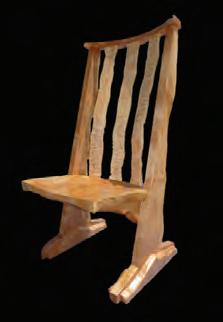
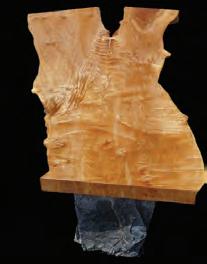




























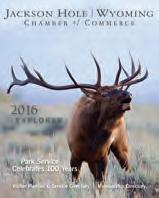





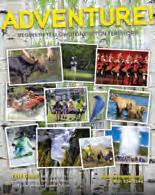



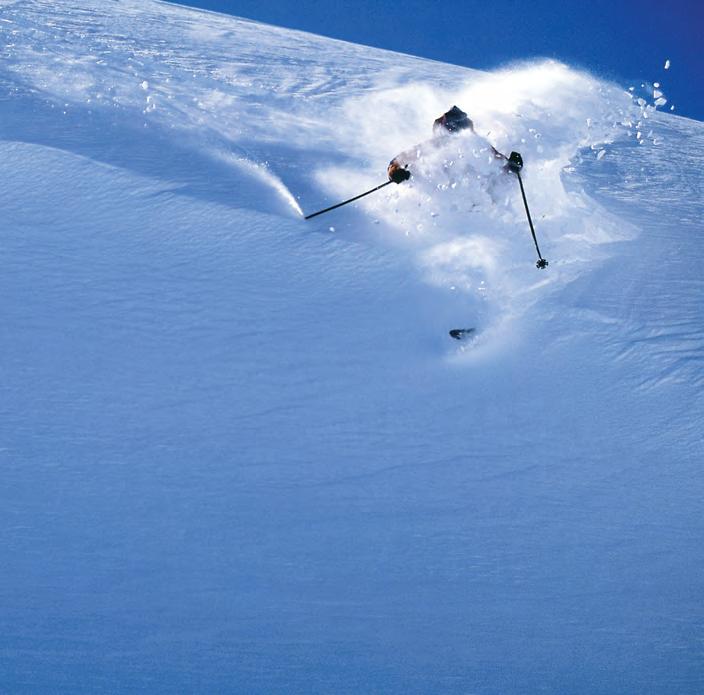











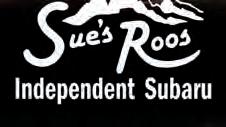

questions. The fee for an open session is simply the cost of using the aquatic center. According to Pruzan, they sometimes see as many as twenty boats in the pool on a given night.
Rendezvous also offers two-day roll clinics at the rec center. These cost $85 and include instruction on everything from wet exits to T-rescues, on-side rolls, off-side rolls, hand rolls, and backdeck rolls—as well as basic strokes, including braces. The clinics are limited to eight kayakers, and advance registration is required.
Finally, those wanting one-on-one instruction can opt for a private session with one of Rendezvous’ professional instructors.
“Learning in the pool helps take the fear out of going underwater while sitting in a kayak,” says Chuck Parquet, the rec center’s aquatic programmer. “For beginners, the pool sessions help them become comfortable in a safe environment before they hit the rivers. And for seasoned kayakers it helps take the rust off before jumping back on the river in the spring.”

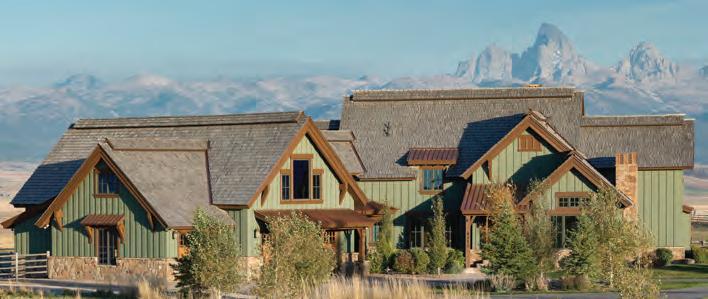

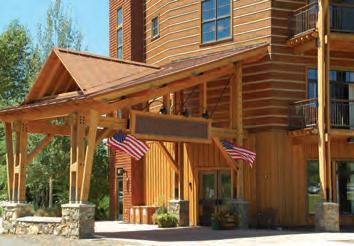




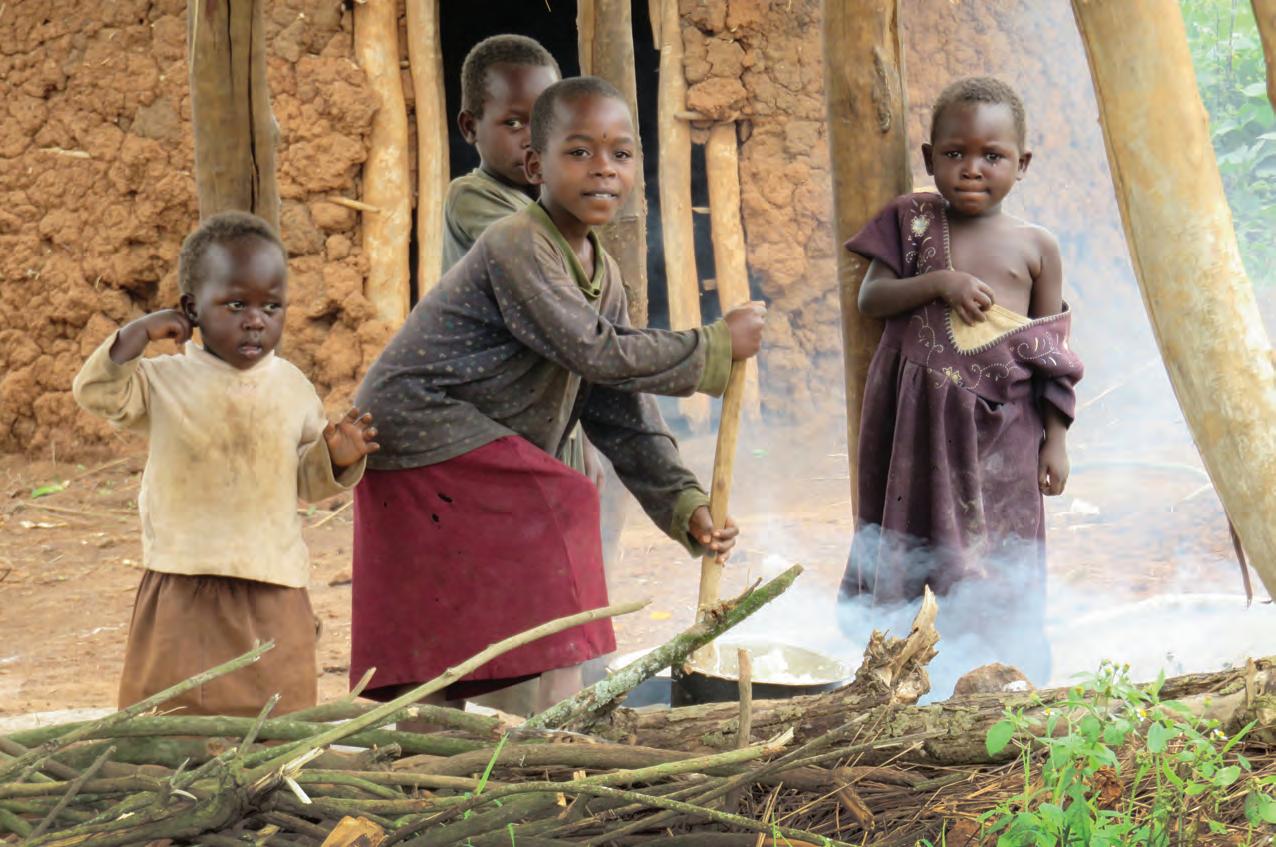
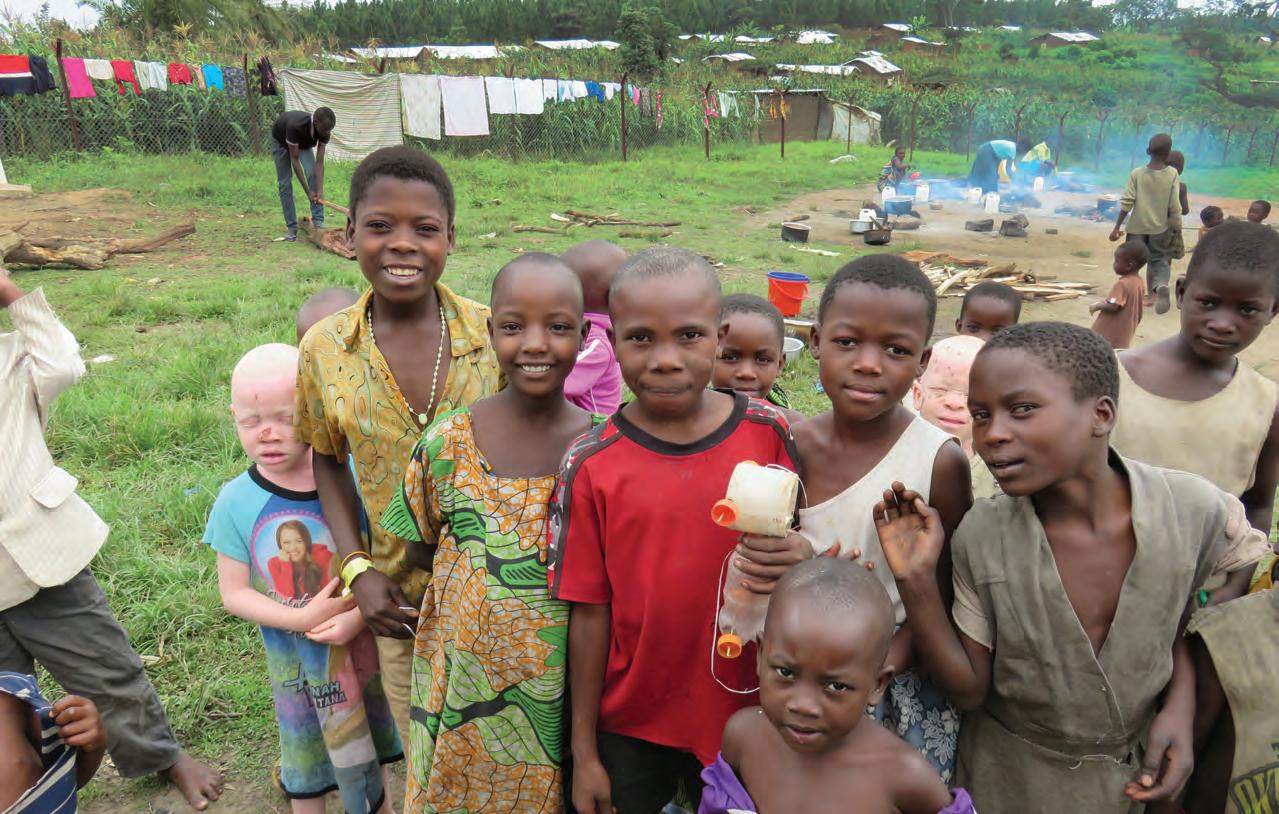
In June of 2015, my wife Melanie and I traveled to the “Pearl of Africa,” Uganda, to spend a few weeks with our son Josh, our daughter-in-law Mikiko, and our two delightful grandchildren. Accompanying us were five bags, three of them bulging with deflated soccer balls, air pumps, jump ropes, and Frisbees.
Josh and his family live in Kampala, the capital of Uganda. He serves as the U.S. Department of State’s Regional Refugee Coordinator for Africa’s Great Lakes region. In his current position, Josh works for the State Department’s Bureau of Population, Refugees, and Migration (PRM), whose focus is the issues relating to refugees, other migrants, and victims of conflicts.
Josh spends up to half his time in the bush visiting refugee settlements, traveling by boat, plane, and Land Cruiser. He works with the United Nations refugee agency, the different host countries, and numerous other organizations to monitor the status of refugees served by programs the U.S. helps fund. The region he covers is home to more than three million refugees and IDPs, or internally displaced persons.
Grins widened as we broke out the soccer balls.
Melanie and I had hoped to accompany Josh on one of his visits to a refugee settlement. Melanie’s idea was that we ought to try to do something that would bring a little joy into the lives of some kids. Josh was indeed able to obtain advance permission to have his parents join him; so, with financial support from our local Church in the Tetons, we had purchased the play items that filled those three large bags.
The Rwamwanja Refugee Camp is located in western Uganda toward the border with the Democratic Republic of
Congo (DRC). It is not the stereotypical refugee camp we read about or see on the evening news. Rather than a camp containing tents lined up side-by-side in long rows, it is a settlement comprising about fifty square miles and more than thirty villages.
And that is where, three days after arriving in Uganda, we were headed in the white PRM Land Cruiser piloted by Lawrence, Josh’s driver.
It’s a four- to five-hour drive of 180 miles over paved and then deeply rutted dirt roads from Kampala to the administrative offices at Rwamwanja. After arriving and being welcomed by the settlement administrators, we drove to the reception center. Here newly arrived refugees are temporarily housed in a dorm-like setting and fed two hot communal meals a day prepared by resident women. Most of the refugees in Rwamwanja come from the DRC, where life has become extremely dangerous due to fighting between local armed groups, militias, and government troops. As of March 2016, 48,000 refugees from the DRC were living in Rwamwanja.
What struck us first was the presence of a group of people with very pale skin and fair hair: albinos who had escaped the DRC, where, because of their appearance, they had been abused and persecuted. In fact, individuals with albinism are not infrequently murdered for the purpose of harvesting their body parts, which are sold to be used in witchcraft. Most of the albinos don’t stay long in Rwamwanja, but are resettled to a Scandinavian country.
In the dirt courtyard of the reception area, people hung out in small groups, and women stood over large pots on open fires. Curious smiles broadened when Melanie brought out her camera, and the grins widened even more when we broke out the soccer balls and jump ropes. Within minutes, young boys and men were pumping up balls; just as quickly, the women and girls had the jump ropes twirling.

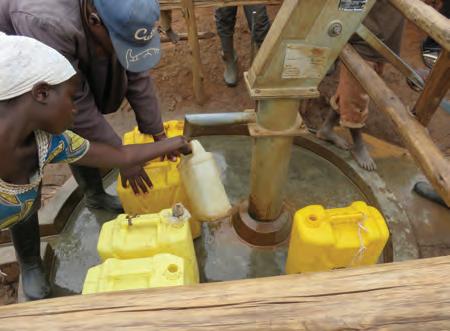
OPPOSITE: TOP, CHILDREN HELPING TO PREPARE DINNER; BOTTOM, KIDS AT THE RECEPTION AREA ARE DELIGHTED TO HAVE THEIR PHOTOS TAKEN. NOTE THE ALBINO CHILD ON THE LEFT. ABOVE: TOP, FOOD BEING PREPARED AT THE RECEPTION AREA; BOTTOM, REFUGEES FILLING FIVE-GALLON JERRY CANS WITH WATER AT A BOREHOLE (WELL).
Our daughter-in-law Mikiko works for PEPFAR, the President’s Emergency Plan for AIDS Relief, initiated during the George W. Bush administration. Mikiko administers small grants to organizations in Uganda that play a role in preventing, treating, and dealing with the impact of AIDS.
One of the grantees is a shelter in the capital city of Kampala, which cares for children with no family. They may be homeless “street children” fending for themselves, or orphans from an island in Lake Victoria where AIDS has decimated the adult population.
A friend from our church here in Teton Valley is an artist who, on learning that we were headed for Uganda, had handed us a check, asking us to use it to buy some art supplies for children in need. Mikiko suggested that it would be a real treat for the children in the shelter to be able to create some artwork. So, Melanie and I paid a fun visit to the local bookstore, selecting all manner of art supplies as well as some really cool children’s books.
On the appointed day, our son Josh drove us to a shelter situated at the end of a potholed alley in downtown Kampala. We were welcomed by the staff, given a tour of the facility, and introduced to some of the

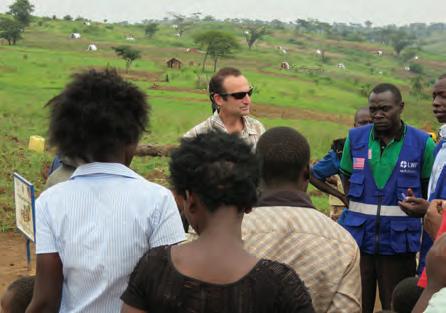
kids, who greeted us with shy smiles. The crowded bunkhouse-style sleeping arrangements made a deep impression on us. Beds are triple-deckers made of metal with only a thin blanket separating the sleeping child from the steel crossbars. Multiple kids share one bed.
The need was great, obviously. The sleeping facilities were overflowing. A new, larger dormitory was under construction, and some of the kids were being housed off-site. We were distressed by the thought of these kids sleeping on those steel bars. So, when we returned to the valley, we talked with our friends at Church in the Tetons about procuring some basic foam mattresses. Mikiko began trying to organize the purchase of mattresses on our behalf.
In the meantime, Rotary International stepped up and bought the mattresses. So, the shelter staff suggested we supply backpacks for the kids to take to school. Mikiko was able to find a local women’s cooperative to fabricate the packs. This solution provided work for the women as well as packs for the kids to wear to school.
It was an opportunity for some Teton Valley folks to lend a hand—and, overall, a win-win-win situation.

LEFT: TOP, KIDS HAVING FUN WITH THEIR NEW JUMP ROPES; BOTTOM, JOSH CONFERRING WITH REFUGEES AT ONE OF OUR STOPS IN THE SETTLEMENT.
ABOVE: MIKIKO GETTING READY TO VISIT SITES WHERE AIDS MITIGATION PROJECTS ARE UNDERWAY.

ABOVE: MELANIE, DAVID, AND JOSH WITH A REPRESENTATIVE OF LUTHERAN WORLD FELLOWSHIP, THE ORGANIZATION THAT HAS ADMINISTRATIVE RESPONSIBILITIES IN THE SETTLEMENT.
After three to four days at the reception center, families are allocated plots of land fifty meters square, thus allowing them to build a simple dwelling, plant crops, and work their way toward self-sufficiency. To get them started, they’re provided basic necessities such as plastic sheeting for shelter, jerry cans for hauling water, mosquito netting, and tools for clearing the bush and planting crops.
A significant number of the refugees from the DRC are “unaccompanied minors,” mainly young boys, who enter Uganda on their own. They do their own cooking, sleep together under one roof, elect their own leaders, and get themselves to school.
As of 2014, the settlement had five primary schools and one secondary school. It also supported two health facilities. The first one we visited consisted of a single-room building with a table, behind which sat the nurse. On the table were containers of various medications, including at least one antimalarial. A long line of patients waited to enter the building.
The main health center is located near the administration buildings. There we met the sole physician, a young, very pleasant Ugandan, who did everything: supervised the midwives, performed C-sections, and treated ma-
laria and other infectious diseases. The facility was absolutely packed with patients. The pediatric room held so many cribs containing children with IV tubing running into them that there was barely room to walk. In the obstetric room, all the beds were occupied, and women were sitting or lying on the floor
The numbers are staggering. As of March 2016, Uganda alone held 520,000 refugees, most of them from the DRC and South Sudan. In the DRC there were almost 3.8 million displaced people. This included refugees from the Central African Republic and Rwanda, as well as about 1.5 million IDPs, Congolese forced to flee their homes because of conflict. Other Great Lakes countries— Tanzania, Republic of Congo (ROC), and Rwanda—held another almost half million refugees.
Given the internal conflicts, the opportunity for most of these refugees to return to their homes seems unlikely. Integration into the culture, economy, and society of the host country may be an option for some. Rwamwanja’s emphasis on promoting self-sufficiency may offer a first step in that direction. Resettlement in a developed country—the U.S., Canada, or one in Europe—is an option for a relatively limited number of individuals. That leaves millions of displaced persons with little hope of ever living, or seeing their children live, outside the confines of a refugee settlement.
The primary purpose of our trip was to spend some rare time with family. It was great fun hanging out with the grandkids, reading books, playing games, going on a four-day safari in a national park, and swimming in a pool overlooking the Nile. But our visit to Rwamwanja instilled in us a deeper empathy for those who, through no fault of their own, have been forced to leave their homes. And, after seeing the work being done to try to provide for these displaced people, we have the utmost respect for the individuals and organizations striving to make refugees’ lives better and see their dignity restored.
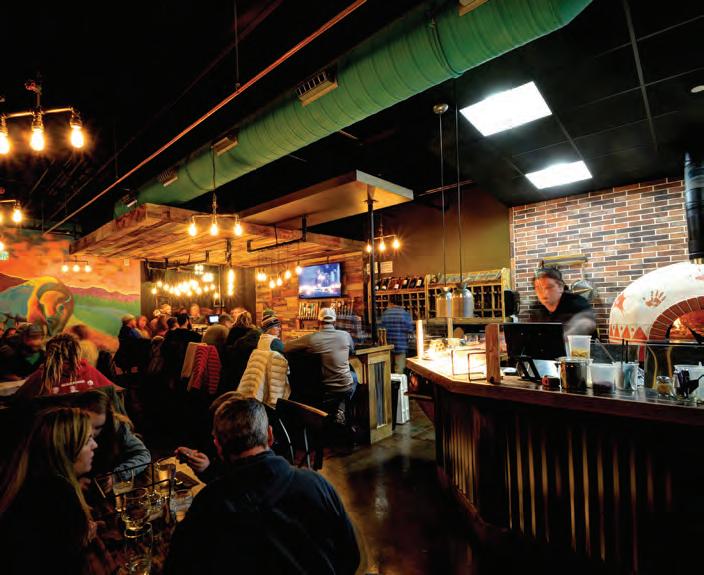


YOUNG AARON EGBERT ACTUALLY DOESN’T MIND BEING DISTURBED, ESPECIALLY IF YOU’RE PURCHASING A TUB OF HOT-BUTTERED POPCORN FROM HIM.

BY KATE HULL PHOTOGRAPHY BY JAMYE CHRISMAN
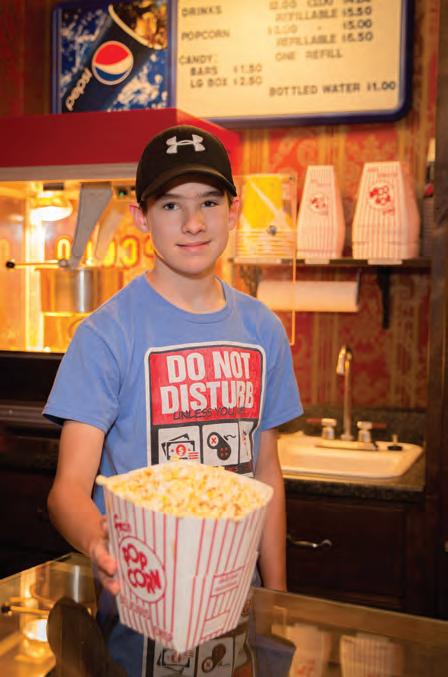
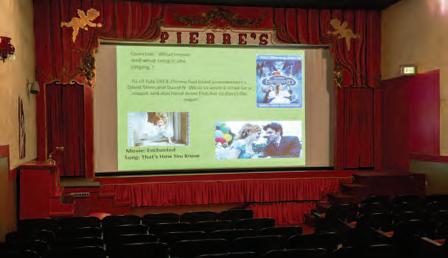

At a quarter past seven, my husband-to-be (and the real thing by the time you read this!) and I bundle up and walk through the dimly lit Victor streets as light snow falls. The wintry Saturday night is quiet and calm. Hand in glove-covered-hand, we’re headed for our favorite date night: a movie at Pierre’s Playhouse.
Inside, the Main Street theater is a time capsule of history, with vintage photos, painted advertisements, and restored architecture. It began as a movie theater in the early 1950s, but closed shortly thereafter. The need for a local entertainment venue brought the place back in 1963 as a melodrama theater, thanks to Peggy and Tom Egbert and a handful of other determined locals. Pierre’s ended its theater run in 2006, but the couple’s children and the building’s current owners, Tom Egbert Jr., Wayne Egbert, and Cari Golden, decided to upgrade the building and transform it back into a movie theater. The renovated enterprise reopened in 2010.
“A small town is alive with a movie theater, and is better than a small town without one,” says Tom.
Velvet curtains open on a room that, not surprisingly, appears equal parts movie theater and playhouse. During the holidays, in fact, the theater revisits its past and puts on a celebrated live rendition of A Christmas Carol. But don’t let the retro look fool you.
“Pierre’s offers high quality video and sound [like that] found in modern theaters,” Tom says, “and dispenses it inside an old-fashioned, quaint atmosphere.”
Pierre’s offers one or two movies at a time, with a showing at 7:30 p.m. Thursday through Saturday, along with Saturday matinees.
For Kenny and me, it rarely matters what’s showing on the big screen. The draw of a simple night out is more than enough: just the two of us, munching on popcorn and losing ourselves in whatever movie happens to be playing.




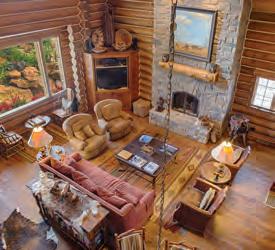




310 North Main Street
Driggs, ID 83422
208-354-2003
Open Daily 11am–10pm
From the owners of El Abuelito in Jackson comes Agave, Teton Valley’s very own family Mexican restaurant! Serving fajitas, burritos, and all of your Mexican favorites cooked to perfection seven days a week, with lunch specials from 11am to 3pm daily. Bienvenidos amigos, mi casa es su casa!

36 South Main Street
Driggs, ID 83422
208-354-2307
Open Daily 9am–7pm
Teton Valley’s source for all-natural and organic products including local and organic produce, meats, cheeses, and bulk food; 460 Bread baked fresh daily; beer and wine; nutritional supplements; health and beauty products; all natural pet foods; and much more! Juice & Smoothie Bar is open 9am to 2pm daily. Check in for the soup of the day, sandwiches, salads, as well as other various grab-and-go takeout options. [p. 65]

Broulim’s Food and Pharmacy
240 South Main Street
Driggs, ID 83422
208-354-2350
Open Mon–Sat 7am–11pm broulims.com/driggs
Order sandwiches to go made from your choice of Columbus meats and cheeses. Breakfast sandwiches and paninis made fresh daily. There’s a full menu at the Pack Saddle Grill, with burgers and sandwiches, as well as hot baked or rotisserie chicken, take-and-bake pizza, and other meals to go. Check out our display of hand-cut specialty cheeses! Freshly prepared salads, our own Sushi Bar, and hot Asian food. Daily specials of smoked meats available. Inquire at the Deli for catering services.

10 South Main Street
Driggs, ID 83422
208-354-2334
Open Mon–Sat 9am–6:30pm driggspharmacy.com
Located at the stoplight in historic downtown Driggs, the familyowned and -operated Corner Drug has been a local favorite for satisfying that ice cream craving for more than a hundred years. Try a fresh lime freeze or a huckleberry milkshake. Corner Drug also has your weekend essentials and a full-service pharmacy. Hunting and fishing licenses and tackle available. [p. 10]

Dining In Catering, Inc.
Bill Boney, Owner & Executive Chef
208-787-2667, toll-free 800-787-9178 diningincateringinc.com
Dining In Catering, Inc. is the region’s most experienced outdoor event catering company, receiving rave reviews for great food and service. Owner and executive chef Bill Boney and his staff have catered the biggest events, weddings, and corporate retreats to take place in Jackson Hole and Teton Valley. Dining In Catering also offers a banquet location in Teton Valley—Wildwood Room, the Gathering Place for Teton Valley’s best events since 2003! [p. 13]

Forage Bistro & Lounge
285 Little Avenue, Suite A Driggs, ID 83422
208-354-2858
Open Daily Mon–Fri 11am–9pm, Sat and Sun 10am–9pm forageandlounge.com
Forage Bistro & Lounge, specializing in seasonal regional cuisine with an emphasis on local ingredients, offers creative, chef-inspired lunch, brunch, and dinner seven days a week. Enjoy half-priced bottles of wine every Wednesday, as well as Happy Hour food-and-drink specials daily from 3pm to 6pm. Homemade desserts, amazing burgers, buffalo ribeye, market fish, and more served from scratch. Our open kitchen with nothing to hide offers diners a unique experience in Teton Valley.

Grand Targhee Resort
Alta, WY 83414
800-TARGHEE (827-4433) grandtarghee.com
Chef David Hugo of The Branding Iron offers authentic Rocky Mountain fare and housemade items including fresh local ingredients and Wyoming-raised beef. Enjoy casual slopeside dining with a full bar, must-try menu, and unbelievable views. At the Trap Bar and Grill you’ll find local microbrews on tap, great food like the famous Wydaho Nachos, high-definition TVs, and the best après live music on this side of the Tetons! Snorkels is your slopeside bistro; enjoy a cappuccino with a Wyoming-style breakfast burrito; return for a fresh sandwich with a steaming cup of soup. Stop by for dinner on weekends and holidays for authentic Mexican cuisine. At Wild Bill’s, treat yourself to authentic Mexican fare, burgers, house-made chili, soups, pizza, and more! [BC]
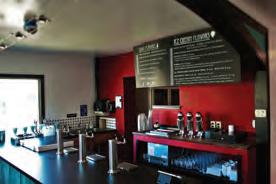
J & M’s Soda Shoppe
260 North Main Street Driggs, ID 83422
208-354-3500
Open 11am-9:30pm, closed Sunday & Wednesday jmsodashoppe.com
J & M’s Soda Shoppe started with a passion for things that taste great and a craving for the freshest ingredients. POP! A soda company was born in downtown Driggs, Idaho. Visit J & M’s Soda Shoppe to enjoy locally made craft sodas, natural ice creams, shakes, malts, desserts, and hot soup on a crisp winter day. Relax with your family after skiing or enjoy a date night sundae with your sweetheart at J & M’s, located on Main Street in Driggs.

1300 East 6000 South Victor, ID 83455
208-787-LINN (5466) linncanyonranch.com
Linn Canyon Ranch is a winter wonderland where sleigh bells ring as you dash through the snow in an authentic horse-drawn sleigh. Join us for a cozy western evening and an elegant dinner in our historic lodge. Experience the fine hospitality the Linn family is known for. Twenty-four hour advance reservations required. We also host holiday and private parties. [p. 35]

1110 West Broadway @ Hwy 22 Jackson, WY 83001 307-733-7444
Open Daily 5am–12am or later mcwyoming.com/6435
Fast, Affordable, and On Your Way! Whether you’re driving over the pass on your way to Grand Teton National Park or commuting to your job on the “other side,” make McDonald’s® a part of your day. We’re serving your breakfast favorites like the classic Egg McMuffin®, Egg White Delight McMuffin®, and McCafe™ beverages featuring Lattes, Mochas, and Frappes. Premium Salads, Real Fruit Smoothies, and Fruit and Maple Oatmeal are delicious choices to support your healthy, active lifestyle. [p. 11]
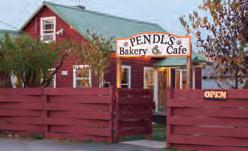
40 Depot Street
Driggs, ID 83422
(1 block northwest of the stoplight)
208-354-5623
Closed Mondays pendlspastries.com
Looking for a Latte and fresh Apple Strudel? Find them at Pendl’s, where Kitzbuehel Konditor Fred Pendl has passed his baking traditions on to daughter Martha. From Nussknackers to Florentiners, Old World Austrian pastries and confections continue. Delectable Strudels and fruit-filled Danish pastries baked in-house daily, with homemade muffins, quiches, and cranberry granola rounding out your morning. Relax by our cozy winter stove, savor a freshly roasted coffee or handcrafted espresso drink, and start your day right at Pendl’s!

Seoul Restaurant
528 Valley Center Drive, Suite #4
Driggs, ID 83422
208-354-1234
Open Daily, except Monday, 11am–10pm seoulrestaurantdriggs.com
Come in and try Seoul Restaurant, where authentic Korean food will surely fulfill your appetite. We serve hot pot soups such as Kimchi Jjigae, and Soon Do Boo along with dumpling soup and Jombong soup. Not in the mood for soup? We also have hearty meat entrees such as Galbi, Bulgogi, Dolsot Bibimbap, Sushi, and much more! Located in north Driggs, Seoul Restaurant will definitely satisfy your appetite. We also offer takeout.

57 South Main Street Victor, ID 83455
208-787-8278
Open Daily, 11am–9pm facebook.com/taquitoscarlitos
Victor’s new, fresh taqueria-style restaurant Taquitos Carlitos features authentic, fast, and good quality Mexican fare like tortas, enchiladas, burritos, gorditas, quesadillas, and more, as well as your favorite snacks and candy. Perfect for a sit down lunch or dinner, or for a meal on the go, Taquitos Carlitos is bringing delicious homemade Mexican food to downtown Victor. Stop by seven days a week.

Tatanka Tavern
18 North Main, 3rd Floor of the Colter Building, Suite 315 Driggs, ID 83422
208-980-7320
Open Daily 4pm–midnight tatankatavern.com
Tatanka Tavern offers wood-fired artisan pizza, salads, and the finest craft beers and wines. Our fire-kissed crust is the difference of artisan pizza making. Part lounge and part restaurant; bring in the family for a night out, or grab a seat at the bar and watch the game. Enjoy local favorites like Fungus Amongus and Piggy Smalls for dinner daily. Don’t miss trivia nights every Tuesday, or showcase your talent on Wednesdays during Karaoke night. [p. 63]

Teton Thai
18 North Main Street Driggs, ID 83422
208-787-THAI (8424)
Lunch Mon–Fri 11:30am–2:30pm; Dinner Daily 4pm–9pm tetonthai.com
Voted “Best Restaurant, Teton Valley” in the Jackson Hole Weekly, Teton Thai offers something for everyone. Enjoy a variety of exotic dishes, from Crispy Duck Pad Gar Pow to Muslim-style Masaman curry, all made from our family’s recipes created in Bangkok. Sit at the kitchen counter and watch our chefs prepare your dish while you explore our eclectic beer and wine list. Dine in or take out.
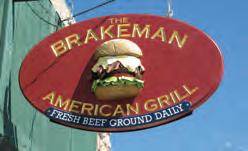
The Brakeman American Grill
27 North Main Street Victor, ID 83455 208-787-2020
Open Sun–Thurs 11:30am–3:30pm and 5pm–9pm, Fri–Sat 11:30am–3:30pm and 5pm–10pm
Freshly ground chuck is where The Brakeman Burger begins. We grind select cuts of beef daily here at The Brakeman and blend it with special spices. We serve our burgers up on a terrific bun with the freshest lettuce, tomato, and red onion, and pair it with our fresh-cut fries. Our customers insist we’ve got the best burger they’ve ever tasted! We’re all about fresh at The Brakeman American Grill: crisp, tasty, and innovative salads, along with veggie burgers and other sandwiches. Great atmosphere, terrific music. Dine in or take out.
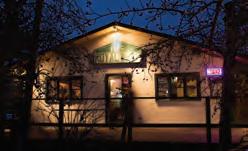
63 Depot Street
Driggs, ID 83422
208-354-8365
Open seven days a week; serving lunch and dinner 11am–late theroyalwolf.com
Since 1997, locals and visitors alike have enjoyed discovering this off-Main Street establishment offering a diverse menu of sandwiches, burgers, salads, appetizers, and entrées served in a casual, smoke-free, pub-style environment. Complementing our menu is a full bar serving all of your favorite beverages, including cocktails, wine, and a selection of regional microbrews on draft. Enjoy outdoor dining on our spacious deck during the summer. Daily food and beer specials, Wi-Fi, and billiards. Stop by to meet old friends and make new ones. Snow sagas and fish tales told nightly.

Three Peaks Dinner Table
15 South Main Street
Driggs, ID 83422
208-354-9463
Open Tues–Sun 11am–10pm
Daily happy hours 4pm–6pm threepeaksdinnertable.com
Enjoy custom-cut steaks, fresh fish, and chops at this great downtown Driggs restaurant close to the stoplight. Boutique wine selection available for takeout or on-site enjoyment. Unique western-influenced menu with game meats, along with gluten-free and vegetarian options. Private in-home or on-site catering and cooking classes available. We feature locally made artwork in our unique, circa 1940s building. Visit our website or call for reservations.

Victor Emporium
45 North Main Street
Victor, ID 83455
208-787-2221
Open seven days a week
Over one million served! For more than sixty-five years the Victor Emporium Old Fashioned Soda Fountain has served milk shakes, including the World Famous Huckleberry Shake. Gourmet coffee and espresso served daily. The Emporium is also a great place to pick up those unusual gifts. Where the locals meet before and after skiing! We are your stocking stuffer and white elephant gift headquarters. [p. 25]

Victor Valley Market
5 South Main Street
Victor, ID 83455
208-787-2230
Open Daily 7am–9pm
Victor Valley Market is your local grocer and the place to get fresh seafood and choice meats in Teton Valley. Offering a unique selection of groceries, from organic and specialty items to your everyday needs, including a full selection of wine and beer. Our gourmet deli counter offers delicious house-made takeout dishes, along with sandwiches made with locally baked bread, fresh salads, house-made soups, and so much more! Victor Valley Market has all that you need to make a delicious meal, whether for eating in or picnicking out.

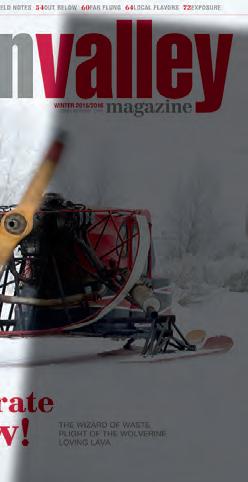



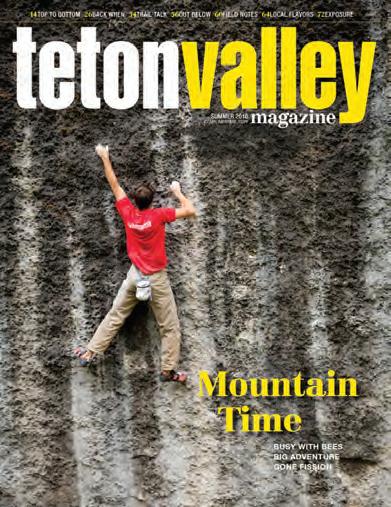

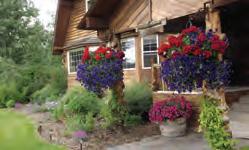
Fin and Feather Inn
9444 South Highway 31 Victor, ID 83422
208-787-1007
finandfeatherinn.com
The Fin and Feather Inn is a small bed and breakfast in Teton Valley situated along the Teton Scenic Byway. We combine luxury and country hospitality, making for a very relaxing and comfortable stay. Our three rooms feature Grand Teton views, spacious bedrooms, private bathrooms, dual-head showers, a deep soaking bathtub, HD/Direct TV, and free wireless Internet. Come stay at the Fin and Feather Inn and experience the wonderful adventures that Teton Valley has to offer, while staying at a quality bed and breakfast.
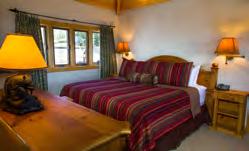
Grand Targhee Resort Alta, WY 800-TARGHEE [827-4433] grandtarghee.com
After a day of skiing, it’s time to relax with the family in one of a variety of western-style slopeside accommodations. All lodging is located just steps away from an array of shopping, dining, and activities. For those who desire a more intimate family retreat, consider Grand Targhee Resort’s Vacation Rentals in Teton Valley, perfectly situated in Victor, Driggs, and the resort. Call 800-TARGHEE to book your stay. [BC]
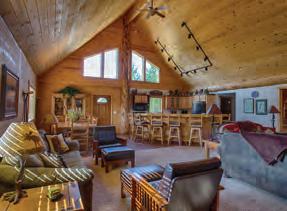
Grand Targhee Resort Property Management
18 N. Main #105 Driggs, ID 83422 307-353-2300, ext 1396 grandtarghee.com
With over 30 years of experience, our team provides 24 hour service, real estate advice, and strategic marketing for your vacation rental to maximize exposure. For those who desire a more intimate family retreat, consider a vacation rental in Teton Valley, perfectly situated in Victor, Driggs, and the resort. Call 800-TARGHEE to book your stay. [65]

Grand Valley Lodging Property Management
PO Box 191, 158 N. First Street Driggs, ID 83422
800-746-5518
mail@grandvalleylodging.com grandvalleylodging.com
Grand Valley Lodging is the premier property management company in Teton Valley, operating since 1992. We offer great rates on shortterm rentals that include vacation homes, cabins, and condominiums throughout the valley. We are also the largest long-term (six-monthsplus) property management company in the valley, and can help you optimize income and maintain your property. With our extremely experienced team in the housing rental business, we are happy to discuss the management of your valuable investment in Teton Valley. [p. 23]
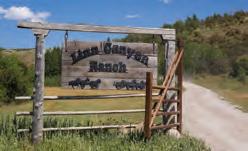
Linn Canyon Ranch
1300 East 6000 South Victor, ID 83455 208-787-LINN [5466] linncanyonranch.com
Our lodging combines the best of luxurious accommodations against the backdrop of an Idaho winter wonderland. Sleep peacefully in a timber-frame cabin, nestled in the snowy foothills of the Tetons. Join us for a sleigh ride and dinner during your stay. We are also happy to help you reserve off-site adventures, such as snowmobile tours or cross-country and downhill skiing. [p. 35]

Teton Springs Lodge & Spa by Natural Retreats
10 Warm Creek Lane Victor, ID 83455 888-451-0156 or 208-787-7888 tetonspringslodge.com
US News & World Report’s #1 Hotel in Idaho, this Natural Retreats destination offers fifty-one elegant guest rooms and suites, as well as luxury log cabins. Nestled on the border of the Caribou-Targhee National Forest, the year-round resort has the best of summer and winter activities available. The Stillwaters Spa & Salon offers a full range of services. Guests staying at the Lodge/Cabins have access to the private Resort & Club amenities including two Byron Nelson designed golf courses, outdoor heated pool, and fitness center. With access to a wide-range of activities, this is the perfect destination for an unforgettable vacation.
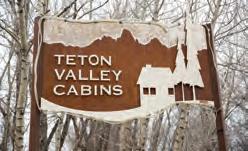
Teton Valley Cabins
34 East Ski Hill Road Driggs, ID 83422 208-354-8153 or 866-687-1522 stay@tetonvalleycabins.com tetonvalleycabins.com
Nestled amongst mature cottonwoods, Teton Valley Cabins welcomes you for your special getaway, vacation home base, or family or group reunion. Quaint charm, rustic cabins, and affordable rates await you at Teton Valley Cabins, just one mile from Driggs, with its restaurants and shops. Enjoy our picnic and activity grounds complete with an oversized Jacuzzi, or explore Teton Valley from here. We are centrally located, with Grand Targhee Resort just up the road, and other recreational opportunities within a few minutes’ drive. Various room types are available. Our rooms are equipped with microwave, fridge, satellite TV, and Wi-Fi. [p. 33]

Teton Valley Realty Management
253 South Main Street Driggs, ID 83422 208-354-3431 mail@tvrmanagement.com vacationrentalstetonvalley.com
We hope you will allow us to find that perfect home or condominium to make your vacation a memorable and extra-special one. All of our homes are nicely furnished, meticulously maintained, and fully equipped to accommodate your group at a fraction of what you would pay for a few hotel rooms. All homes come complete with linens, kitchen necessities, cable or satellite TV service, soaps, and paper products; some have high-speed Internet service. Basically, you receive all the conveniences of home, away from home. [p. 6]





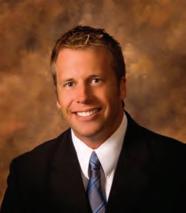


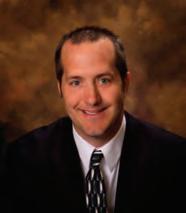





Calvary Chapel Teton Valley
53 Depot Street | Driggs, ID 83422 | 208-354-WORD [9673] ccteton.org
Visitors welcome. Our motto is to simply teach the Bible simply— and thus, our pattern of study is verse by verse, chapter by chapter, book by book, right through the Bible. Sunday service starts at 10am and typically consists of worship, teaching, and fellowship. Dress is nice casual, and the service usually lasts about an hour. Children’s church and a nursery are provided. Wednesday Bible study starts at 7pm and lasts about an hour; dress is casual. One block north of the stoplight in Driggs, turn west on Depot Street (opposite Wallace Street and the gas station); the church will be on your right.
Church in the Tetons | Pastor Karlin Bilcher
Driggs City Center | Driggs, ID 83422 | 208-354-HOPE [4673] churchinthetetons.org / Find us on Facebook
We gather for worship in the Driggs City Center at 9:15am on Sunday mornings. We celebrate the Lord’s Supper on the first Sunday of the month. On months with five Sundays we go out as the hands and feet of Jesus to serve our neighbors however we may. We are a biblically grounded, Christ-centered, mission-focused, witnessing community that exists to serve Teton Valley and the world to the glory of God. We are often described as authentic, relational, genuine, and honest. Nursery is available for infants and toddlers two and under. Education is provided for kids three and over.
The Church of Jesus Christ of Latter-day Saints | Teton Valley Wards
Driggs I Tom Hill 354-8211 1pm
Driggs II Wade Treasure 354-8806 11am
Driggs III Mitch Blake 354-2379 9am
Tetonia I Thomas Richins 456-2871 9am
Tetonia II Jim Douglass 456-2362 11am
Victor I Todd Dustin 787-2211 1pm
Victor II Val Kunz 787-2026 9am
Victor III Stan Marshall 787-3678 11am
St. Francis of the Tetons Episcopal Church
20 Alta School Road | Alta, WY 83414 | 208-353-8100 sftetons@silverstar.com | stfrancis.episcopalidaho.org
Join us for Sunday morning worship and Sunday School beginning at 10am. St. Francis of the Tetons Episcopal Church with the Rev. Deb Adams officiating welcomes worshippers of all walks of faith. In the shadow of the Tetons, this historic church offers an opportunity to experience God’s presence and join in fellowship, spiritual renewal, and service to others.
Teton Valley Bible Church
265 North 2nd East | Driggs, ID 83422 | 208-354-8523
tetonvalleybiblechurch.org
Teton Valley Bible Church welcomes everyone to join us on Sunday mornings at 10:30am. Adult and children’s Sunday school classes begin at 9am. AWANA meets Wednesday nights at 6:20pm for ages 3 years to 6th grade. Junior high ministry also meets Wednesday nights at 6:20pm. Go to tetonvalleybiblechurch.org for more information about our church. We are located on the corner of Howard and 2nd in Driggs. [p. 30]
Table Rock Christian School
1510 North Highway 33 | Driggs, ID 83422 | 208-354-9674 trcs.us
TRCS students say they truly enjoy learning and often find themselves a year or two ahead in key subjects after completing year-end standardized testing. We work to ensure that our students cultivate a joy for learning. We teach them how to think, not just what to think. We utilize a challenging “Traditional Christian Education” approach, utilizing timetested methods including the Bible, McGuffey Readers, and principles from Charlotte Mason and Spalding. Our small but solidly established school boasts a tutoring-like, peaceful, caring environment. If you have a K–6 student, we would enjoy receiving your inquiry.
Teton School District 401
District Office: 208-228-5923
tsd401.org
Teton School District 401 strives to provide a safe and exceptional learning environment, where career and college readiness are the academic cornerstones of a relevant and progressive education. Our daily student focus is having Respect, being Responsible and Ready. [p. 30]
Teton High School
Grades 9–12 | 208-228-5924
tsd401.org
As a four-year high school, THS strives to recognize the uniqueness of the individual in preparing him or her for a lifetime of learning. THS provides a safe and academically focused learning environment, where students are challenged for career and college readiness.
Basin High School
Grades 9–12 | 208-228-5928
tsd401.org
Basin High School is an alternative option for students who meet the state criteria for enrollment. Students obtain credits through a state-approved independent-study format, with assistance from certified staff.
Teton Middle School
Grades 6–8 | 208-228-5925 tsd401.org
Teton Middle School is dedicated to providing a quality education through which students will grow in academic achievement, respect for themselves and others, self-discipline, integrity, honesty, and responsibility.
Teton Elementary Schools
Grades K–3 at Victor 208-228-5929 | Driggs 208-228-5927 | Tetonia 208-228-5930 | Rendezvous Upper Elementary grades 4–5 in Driggs 208-228-5926
tsd401.org
The mission of the elementary schools of Teton School District 401 is to be integral in the partnership between school, home, and community in nurturing and encouraging all children to become productive citizens and lifelong learners.
THE ORIGINAL BLACKFOOT LIFT AT GRAND TARGHEE RESORT PROVIDED THOUSANDS OF RIDES UP THE MOUNTAIN DURING ITS FOUR DECADES IN SERVICE. BUNDLED UP AGAINST THE COLD HERE ARE MADDY AND SARA LEE. PHOTOGR APH BY KELLY LEE

















ICanAgain ST. JOHN’S MEDICAL CENTER



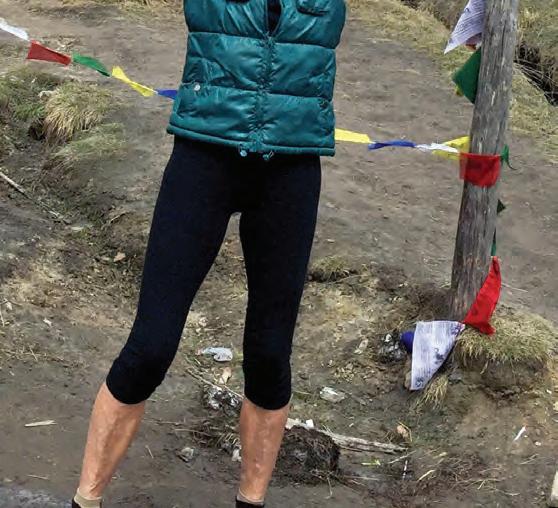

Jackson Hole resident Jane Baldwin is a hiker. But a few years ago her hip made walking, not to mention hiking, painful. After considering her options, she came to our Peak Joint Replacement Center.
Immediately after her hip replacement surgery, her hip felt better. Less than 3 months later, she put her new hip to the test on a trek across Nepal. How did she do? “My hiking partners had doubts about my ability to hike, but I knew I could do it. On day 2, we did 11 kilometers and 3,500 steps.” That’s about the height of the Grand Teton.
For more #ICanAgain stories, visit tetonhospital.org/stories.
